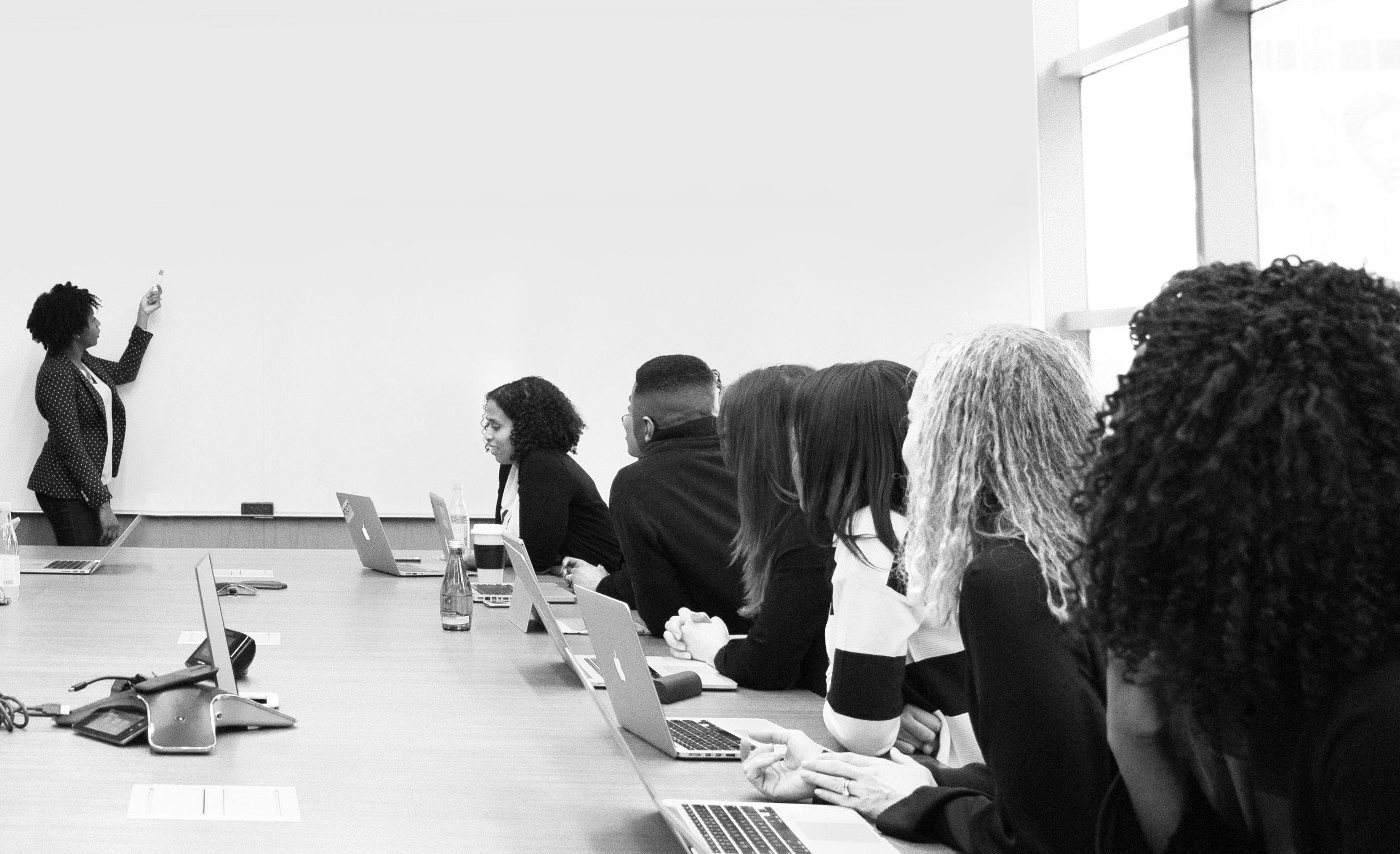blooming minds

EMPLOYEE DISCLOSURE
INTERVIEW:
LISA ANNESE DIVERSITY COUNCIL AUSTRALIA
ARE YOU AN EMPATHETIC LEADER?
SELF LEADERSHIP THROUGH CHANGE
THE VALUE OF BOOKS
BLOSSOM FRIENDSHIP
5 WAYS TO CONTRIBUTE TO THE GREATER GOOD
INTERVIEW:
TANIA CECCONI CEOS FOR GENDER EQUITY
APRIL 2021 issue
16
Our Resources
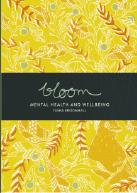

BLOOM! MENTAL HEALTH AND WELLBEING
BY TASHA BROOMHALL
Available in paperback or ebook format.
This book debunks some of the common misunderstandings around mental health and mental health issues. It provides practical strategies for you to use to support your own mental health as well as support those around you.
$22.00 INC GST
A YEAR TO BLOOM – 52 WEEK JOURNAL
BY TASHA BROOMHALL
Feeling stressed? Overwhelmed? In a funk? Need some support for your mental health?
This guided 52 week journal will give you practical ideas and guidance to enhance your wellbeing through two strategies. Each week a new journal activity will encourage you to continue actively enhancing your mental health. You can choose from two different formats – a printed A5 journal or weekly emails delivered straight to your inbox.
$17.60 INC GST
Mental Health Champions Program
Boost your leaders’ skills and all employees’ wellbeing to help them thrive through challenging times.
Combining eLearning, coaching and resources, our Blooming Minds’ Mental Health Champions™ program enables organisations to create a peer-driven, self-sustaining mental health and wellbeing culture, for your people, with your people.
This program enables organisations to identify current psychological health and safety issues with a tailored education and development program. The program helps your organisation to:
• Develop skills through eLearning mental health education sessions.
• Recognise and manage mental health issues in the workplace.
• Champion psychological health and safety best practice.
• Nurture a workplace health and wellbeing culture that everyone owns.
• Minimise psychological risk and reduce mental health costs on your balance sheet.
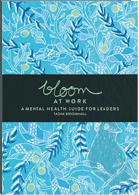

BLOOM! AT WORK A MENTAL HEALTH GUIDE FOR LEADERS
BY TASHA BROOMHALL
Available in paperback or ebook format.
This book will provide knowledge about the relevance of mental health issues, a brief overview of common mental health issues and possible functional impacts and a range of proactive strategies and resources which may assist both the employee and the organisation.
$25.00 INC GST
LIVE CONSCIOUSLY AND BLOOM! – SELF REFLECTION JOURNAL
BY TASHA BROOMHALL
The personal reflections journal provides a guiding hand in reviewing your values. Based on these values you will then set daily intentions and cultivate your gratitude.
Carrying out those two simple steps each day can make an incredible difference to your life.
$24.20 INC GST

Mental Health in the Workplace for Leaders: eLEARNING COURSE
This course delivers an overview of common mental health problems, reasonable adjustments, privacy requirements and balancing people needs with business needs. This course is delivered as four self-paced online assessed modules with individual assessment of learning. Each module has videos, recorded lessons, support notes and an assessment.
To discuss your organisation’s needs, please contact us to set up a meeting.
Previous Editions

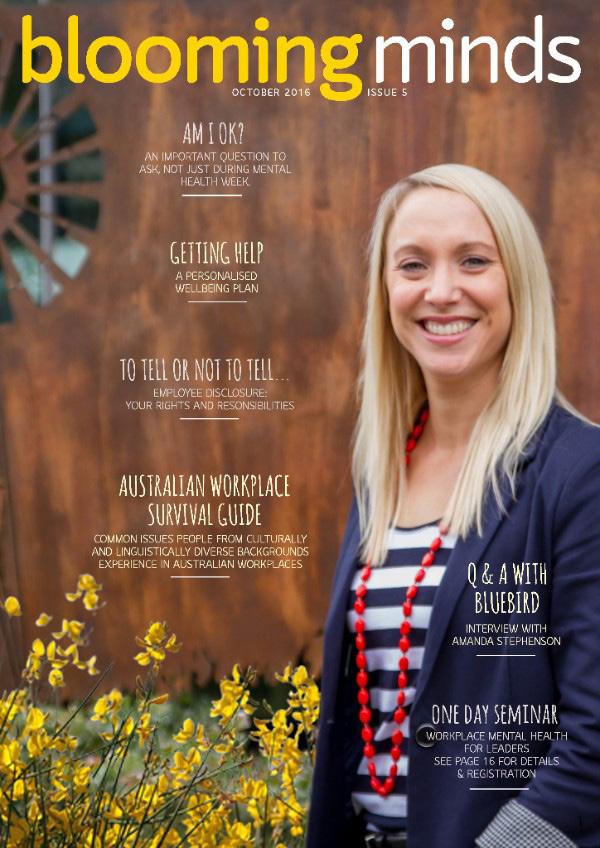



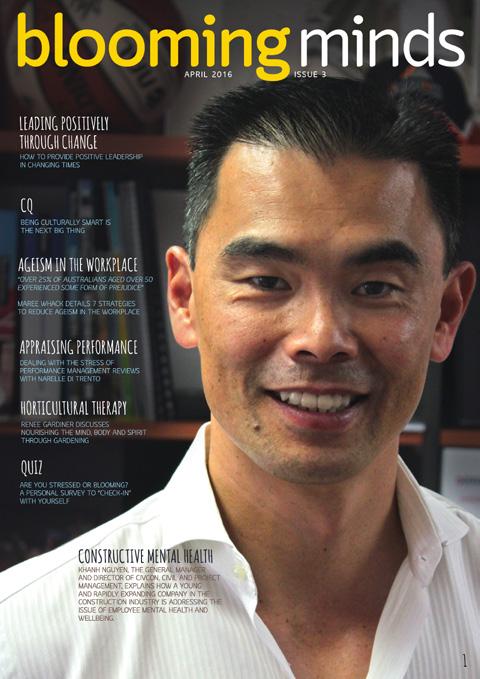




blooming minds
blooming minds



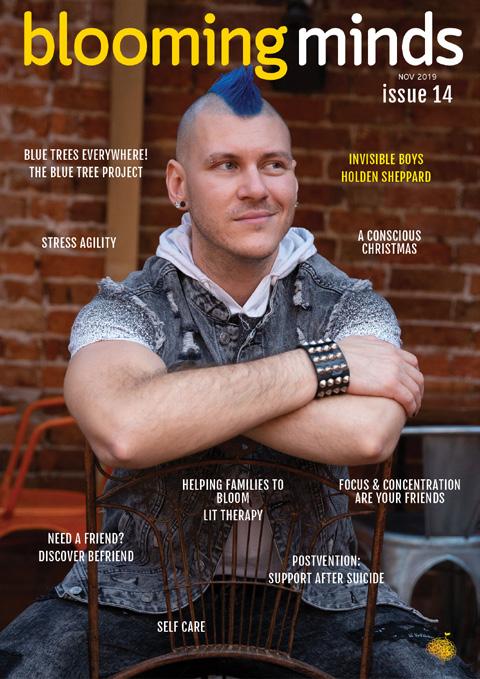



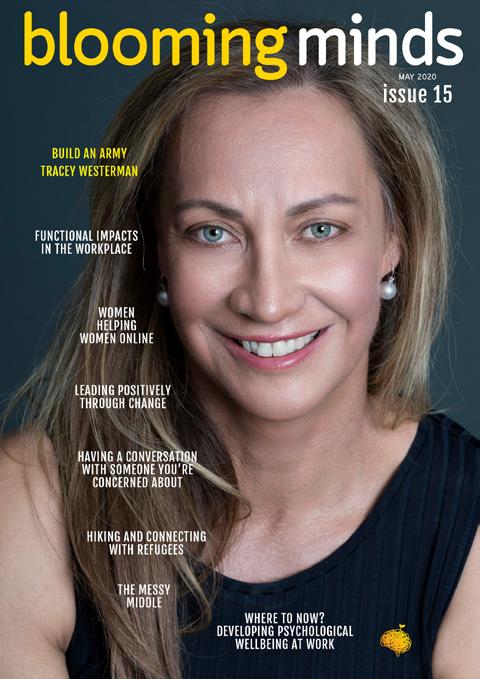
blooming minds

JANUARY 2017 ISSUE 6 MENTAL ILLNESS in the workplace The Small Things POLICY & PROCEDURE CREATING CULTURE OF POSITIVE MENTAL HEALTH HOW CAN WE REDUCE THE EFFECTS OF STRESS? SpecialWorkplaceEdition
START WITH GOVERNANCE CREATING A CULTURE OF POSITIVE MENTAL HEALTH & WELLBEING NEURO MYTHS & HACKS DO WE NEED TO STOP TALKING ABOUT MENTAL ILLNESS? ARE YOU A HUMAN BEING... OR A HUMAN DOING? 13 REASONS WHY SUICIDE SHOULD NOT BE A TABOO TOPIC MAKING REASONABLE ADJUSTMENTS IN THE WORKPLACE IS YOUR ORGANISATION MERELY TICKING THE MENTAL HEALTH BOXES? STUCK INTO SUBSTANCES? HELPING THE HELPERS YOU, ME, WE PERTH ACTIVE DEPRESSION SUPPORT GROUP CURIOUSER & CURIOUSER HAVE YOU GOT THE GUTS? issue 10
HOW MUCH POISON HAVE YOU DRUNK THIS YEAR? NEURO MYTHS & HACKS HOW TO MANAGE CUSTOMER COMPLAINTS AND STAY WELL LOOKING AFTER YOURSELF & OTHERS WHEN TEMPERS FLARE WORKPLACE CONTINUUM OF MENTAL HEALTH & WELLBEING FEBRUARY 2019 issue 12
CYCLING WITHOUT AGE An interview with Alanagh Godderidge, Coordinator of Sorrento Trishaw A HOLE IN HER GENES An interview with Dr. Jodie Fleming MENTAL DEXTERITY & THE OTHER F-WORD STEPS TO HELP YOU BLOOM Talking About Mental Health Issues at Work… WHAT TO DO NEXT BORN TO SING An interview with Martin Meader; Writer and Choir Musical Director WANT TO BLOOM IN 2019? NEED A FRIEND?
EDITOR-IN-CHIEF:
Tasha Broomhall
DEPUTY EDITOR
Janet Stevens
WRITERS:
Tasha Broomhall
Julie Meek
Michael Prince
Janet Stevens
RESEARCHER:
Kelly Ho
PHOTOGRAPHERS:
Craig Broomhall
Jessica Gately
As labelled
DESIGNER: Craig Broomhall

Blooming Minds© 2021 All Rights Reserved. We encourage you to share the content of this e-magazine with others who you think may be interested, however to comply with copyright please ensure that information is only shared in its full form and with the credit given to the authors.
The information, opinions, suggestions and ideas contained in this publication are based on the experience of the contributors and research information which is believed to be accurate but not infallible. All effort has been made to render this information free from error or omission. Whilst written and presented in good faith, Blooming Minds and the contributors assume no responsibility or liability for any loss or damage caused directly or indirectly from this information. The material cannot substitute for appropriate professional opinion, which would take into account individual factors, specific situations, environmental conditions or circumstances likely to influence actions taken or avoided at any time. Please be advised, this publication provides general information only, and should not be seen as professional advice specific to any particular situation, problem or person. If you require assistance for mental health issues please contact your medical practitioner or call Lifeline on 13 11 14.
Issue 16

www.bloomingminds.com.au Contents 6 TASHA’S UPDATE 8 GENUINE INCLUSION 12 5 WAYS TO CONTRIBUTE TO THE GREATER GOOD 14 EMPLOYEE DISCLOSURE 18 INTERVIEW - LISA ANNESE 24 ARE YOU AN EMPATHETIC LEADER? 26 LEARNING FROM THE OLDEST CONTINUOUS CULTURE IN THE WORLD 29 SELF LEADERSHIP THROUGH CHANGE 30 STRESS RELIEF STRATEGIES 34 INTERVIEW - TANIA CECCONI 36 THE VALUE OF BOOKS 37 BOOKS TO HELP YOU BLOOM 38 BLOSSOM FRIENDSHIP 40 PUMPING IRON - JULIE MEEK 42 BEFRIENDING UNKNOWN SELF - MICHAEL PRINCE 44 INTERVIEW - SOPHIE BUDD
Photo: Tim Mossholder (Pexels)

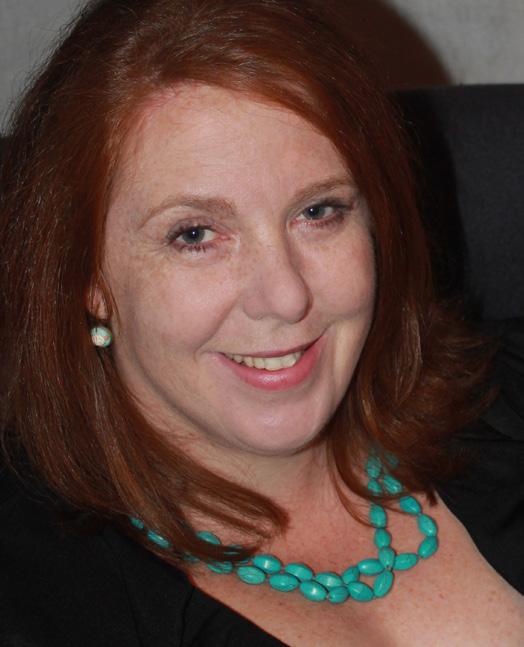
Tasha’s Update
Acouple of years ago I attended the National Suicide Prevention conference. A small group of us were in a meeting with the National Mental Health Commission discussing what we would dream for mental health services in Australia to look like by 2030.
We worked around the table of mental health professionals and other key stakeholders, many with their own lived experiences of mental health issues, each person responding with huge goals around prevention and positive mental wellbeing – goals that we wouldn’t need a national suicide prevention program anymore, goals around opportunities for people to be flourishing... Then it was the turn of the man in his 20s to the left of me. He said that his biggest dream would be that by 2030 he, as a young gay man, could go into any health service, let alone a mental health service, and receive the highest level of care, without any discrimination based on his sexuality. Homophobia within health services was his biggest barrier to achieving positive health.
His comment and subsequent discussion slapped me up the side of the head - I’d not imagined that he wouldn’t already be able to expect non-discriminatory care.
6
Photo: Craig Broomhall
I felt despair and anger that he hadn’t experienced that and frustrated and ashamed of my own ignorance that I hadn’t even realised how common his experience is.
We need to focus on giving people access to nonbiased care immediately. Not in 2030, but right now. Sitting there listening to him I had committed to coming back home to Perth and learning about what does it take to get non-biased healthcare for my 2 queer kids. For a couple of weeks after that event, it kept playing back to me how ignorant I was, and it was very uncomfortable having to acknowledge that ignorance. I thought I already had some knowledge, some experience. We’d stood not long before that conference at the Perth Pride parade, our first time as a family going all together. Over the previous year we had realised how, despite having gay friends and family members, how much we didn’t understand about the lived experience, and as parents how much we needed to learn about our kids’ experience.
But I was sitting there at that conference thinking, oh, crikey. There’s so much more than I don’t even know that I don’t even know. And it was a humbling experience. It was also a disappointing thing to have to acknowledge about myself. Acknowledging those
gaps in our knowledge can be confronting. It can be uncomfortable. But if we can’t acknowledge them, how do we move through them?
How do we do better in the future?
And I knew as a mum, I have lots that I have to learn, but I also want to learn. I wanted to be able to be a better ally. And I was sad that I hadn’t done enough yet. But that wasn’t going to stop me from doing more, going forward.
This edition is full of stories to help us learn more and do more.
I hope you enjoy this edition, and as always, I’d love to hear your feedback and insights. Email me at info@bloomingminds.com.au
Tasha
May you bloom, Want some more ideas on how to help yourself bloom? Watch here.

“ “
Do the best you can until you know better. Then when you know better, do better.
Maya Angelou
African American Poet & Author
7
Mentaldiversityhealth, and intersectionality – achieving genuine inclusion in organisations
By Tasha Broomhall

8
Photo: Gelo
e don’t like to think of ourselves as racist, homophobic, sexist, or ableist. It’s uncomfortable to think of ourselves in that way. But given the fact that there is still so much exclusion in our society, in our workplaces and in our services, some of us must be.
As uncomfortable as this is to admit about ourselves, it’s not as uncomfortable as it is for the people who are on the receiving end of that prejudice. We need to be able to sit with that discomfort for a little bit, reflect on it, learn, and then hopefully, we can move forward together.
If we haven’t had firsthand experience of the various barriers, both invisible and visible, that maintain exclusion in our communities and workplaces, it is incumbent on us to learn, to seek the information, to understand those barriers so that we can do better.
As African-American poet, Maya Angelou, said: ‘Do the best you can, until you know better. And then when you know better, do better.’ But knowing better is not a passive process. It’s an active process which requires you to engage and participate.
There is a lot of focus on mentally healthy workplaces these days. We understand that it is important to create psychologically safe workplaces. Psychological safety means we feel safe to show up as our full selves at work, where we can authentically be ourselves, where we can feel accepted and respected. Where we are included. Inclusive and diverse cultures are essential for workplace wellbeing.
In 2021, there is no valid business reason for not having psychologically safe and diverse workplaces. The business case is clear. Psychologically safe and inclusive workplaces benefit from increased productivity, creativity, and innovation, which are exactly the elements we need in this constantly evolving Covid world.
A psychologically safe workplace not only creates a competitive and commercial advantage, but organisations have obligations to workplace psychological health and safety, including around bullying, harassment and discrimination. So, if we’re not creating safe and inclusive workplaces, why not? If the economic benefits and legal requirements haven’t been enough to create this, then what will?
The group United Nations Women, Australia, predicts that we are 100 years away from reaching gender equality, let alone the various forms of diversity equality beyond binary gender. We can’t just look through the narrow lens of more inclusion for women, which unfortunately we often do. We need to consider gender and sexually diverse people, people of colour, people with differing abilities, neurodiverse people, and people living with mental health issues. Diversity and inclusion isn’t a gender issue, and particularly not a binary gender issue, although that is the shortcut lots of people take.
In 1989, (current) Columbia law professor Kimberly Crenshaw coined the term intersectionality. Crenshaw argued that identity is multi-faceted, and that those various facets interact to create a different experience than if they existed independently. So as a woman, I’ll experience certain levels of bias and discrimination in any given environment. As a woman with chronic health issues and disability, I might also experience additional barriers and discrimination. If I was a woman of colour, if I was a woman of colour with a disability, if I was a trans woman… The different identities that we have interact to create more complex experiences or exclusion.
It’s important that we understand this because too often we try to compartmentalise diversity. Our workplace diversity programs may focus on indigenous employment, or LGBTQIA+ inclusion, or neurodiversity. What we fail to understand is that often people sit across many of those containers. If we don’t understand their individual experience, how can we possibly
overcome the individual barriers they experience?
What we need to get good at is not trying to reduce diversity to a normative view of what that diversity might be. Within those containers there are diverse needs and diverse experiences, and we need to allow these diverse voices to be heard.
We don’t need to fight each other for equality. We need to stand together and fight together for equality. It is incredibly important that we don’t just containerise these ideas to think that our needs are opposing but to think about what’s similar about those needs, what are the barriers that we’re each facing and what are some of the ways to overcome those barriers. We hear a lot about the gender pay gap, but containerising that and inequality to gender alone is too narrow a focus. The World Economic Forum states that employees who belong to two or more underrepresented categories experience increased oppression and lack of opportunity in unique ways:
• Men of colour with disabilities in the workplace currently have 56% pay gap (compared with non-disabled white men);
• Equal pay for white women will come more than 70 years sooner than it does for women of colour;
• LGBTQIA+ women with disabilities reported significantly higher levels of sexual harassment than both men with disabilities and non-disabled men and women;
• More than half of lesbian, bisexual and trans women of colour and ethnic minority women (54%) reported unwanted touching compared to around one third of white women (31%).
These examples demonstrate the increased barriers faced by people who experience more than one disadvantage and these intersectional experiences need to be considered. Their voices must be heard, and their needs must be responded to.
How is this level of discrimination, prejudice and abuse happening given we have laws about non-discrimination, workplaces have obligations around psychological health and safety and the business case for inclusion is clear?
We can hypothesise that there must be other reasons for this to perpetuate in 2021. We can start by asking what are the barriers? Who is benefitting from them being maintained? Whose interests are being served by exclusion? Whose voices are being heard, and whose aren’t? Who’s in the room? Who’s not in the room? And why?
The answers to these questions show us the invisible structures that sustain exclusion. If we’re not willing to have those difficult conversations and examine those structures, we’re not going to see significant improvement, even in a hundred years. With events on a national basis, we see that there are significant levels of discrimination and lack of equality persists, even in our nation’s most powerful workplaces. We have made some progress as a society, but not enough, and too often we’ve ignored intersectionality and inclusion.
So, what do we do now? We connect together and we move forward together. I’m going to give you four ideas for how you might be able to do this.
Firstly though, what not to do! Don’t take a box ticking approach. Funding an inclusion and diversity program, turning up at diversity breakfasts, for example, is not enough. It’s not enough if you’re not also pushing for systemic and cultural change throughout your organisation intersectionally. Symbols, such as having a float in the Pride Parade, putting on an International Women’s Day event, celebrating Harmony Week, these are important. But if they are done without real change and follow through, they risk amounting to nothing more than virtue signalling. Pretty quickly they’ll start to erode trust and belief in your narrative. People will not join you in these events because they will not trust that your intentions are genuine. hey’ll see them for the tokenism that they risk becoming.
W 9
James Charlton, a disability advocate, said ‘Nothing about us, without us.’ Inclusion cannot be done to people. It needs to be done with people. People are not served by a patronising approach to support inclusion. People do not need you to save them. They need you to get out of their way. They need you to stop sustaining the barriers that have protected you and excluded them.
Here are the four things.
The first is to listen loudly.
Don’t push the mental load for educating you onto the people who are already carrying the load of their marginalisation. Listening means finding new voices to engage with. It doesn’t mean expecting that it’s someone’s obligation to educate you about the barriers they experience. Seek out stories of people with lived experience that is very different to your own, but educate yourself before you expect someone else to educate you. We are fortunate in 2021 that there is so much content available to us from people with lived experience, different to our own experiences, that we can learn from if we are just willing to be open, to drop our defences and to actually hear.
Once you’ve started to develop an understanding of what you’ve been oblivious to, then talk to people closer to you and ask them. Don’t tell them, but ask them. What are the barriers that they see, that maybe you don’t?
Listening is about creating space for others to be heard. It’s about paying attention. It’s about acknowledgement and consideration of another’s experience and perspective. It’s about empathy and compassion for that experience. When we start to feel awkward hearing somebody else’s stories, sometimes that awkwardness pushes us into defence mode. We try to shut the other person down because it’s really hard to hear. Think for a moment about how hard it must be to live. It’s important that we show the respect to hear those stories when people are willing to share them with us.
Secondly, be willing to examine your own unconscious bias.
This is a tricky one because it has been a little bit commercialised in recent times. There’s an idea that, Tick!, I’m going to do some unconscious bias training and find out what’s wrong with everyone else.
Be willing to examine yourself. This is adulting. Be willing to actually stop and get to know yourself. Do you often base decisions on quick, surface-level judgements? Have you ever made a judgement about someone and then later on found out you were totally wrong? We do it all the time. It’s not about pretending that your brain is never going to make quick judgements, it’s about not believing every judgement that your brain tells you. Look for other information, other evidence. Explore those ideas, do not just accept them as a universal truth. Do you rely on stereotypes? Do you feel uncomfortable around people who are different to you? Do you start sentences with, ‘I’m not racist/sexist/homophobic…’? If you do, it’s worth examining.
The third action you can undertake is to get comfortable with differences.
When we’re children, we’re socialised to see difference sometimes as wrong or awkward.
Have you ever had a child who, in public, has loudly pointed out someone’s difference? Really loudly and in earshot of that person?
One of my children, on a flight to Hong Kong, was sitting bouncing up and down on my lap. At full volume Maisy screamed ‘Mum! This man has no hair!’
It was a fascinating new discovery for them because Maisy’s grandparents, aunts, uncles and our friends all still had great full
heads of hair. Maisy had never seen a bald head up close. Now this wasn’t my first rodeo with this child who had a habit of pointing out anything interesting to them in public. So there on the plane, my response was to play the ‘Sometimes’ game. A game we played a LOT. It consisted of saying, sometimes people have no hair like this man, sometimes people have long hair like mummy, sometimes people have short hair like daddy. Everybody’s hair is different. Isn’t it interesting? I tried to present it in a way that celebrates differences, that is curious about differences, rather than seeing differences as problems. If we try to shoosh them, try to distract them or talk over them, then we’re actually teaching them is that, at best, differences are a little bit awkward, and, at worst, difference is wrong. And they’re not the lessons we want them to have.
My fourth idea for you is to consider your privilege.
Privilege is about power. Inclusion isn’t a passive act. Inclusion is about sharing power.
At an International Women’s Day event in March 2019, Prime Minister Morrison said, ‘We want to see women rise, but we don’t want to see women rise only on the basis of others doing worse’.
The problem with this comment is that people who are currently holding power will need to share that power for there to be a significant change. They may individually feel worse off, however, equality cannot be achieved without the redistribution of power.
Create space for others actively. Be willing not to just acknowledge your own privilege but willing to examine what you might need to let go of if we’re going to genuinely create inclusion.
You can’t sit in your power, not be willing to share it and pretend that inclusion is important to you. It doesn’t work that way.
So the four things; listen loudly; examine your own unconscious bias; embrace and celebrate differences, and examine your own privilege while actively seeking opportunities to share power.
In the first century Jewish leader, Hillel the Elder, famously said ‘If not now, then when?’. African American statesman and civil rights’ leader John Lewis added: ‘If not us, then who?’
It is not enough to have goals of inclusion and diversity. We need to seek to actively identify the invisible and visible structures that collectively maintain exclusion, and we need to tear them down, not just for inclusion, but to be anti-exclusion.
listen loudly. be willing to examine your own unconscious bias. get comfortable with differences. consider your privilege.
10





11
Photos: Fauxels (Pexels) & Stavrialena Gontzou (flag) (Unsplash)
Contributing to the Greater Good. And why that matters.
By Alicia Curtis
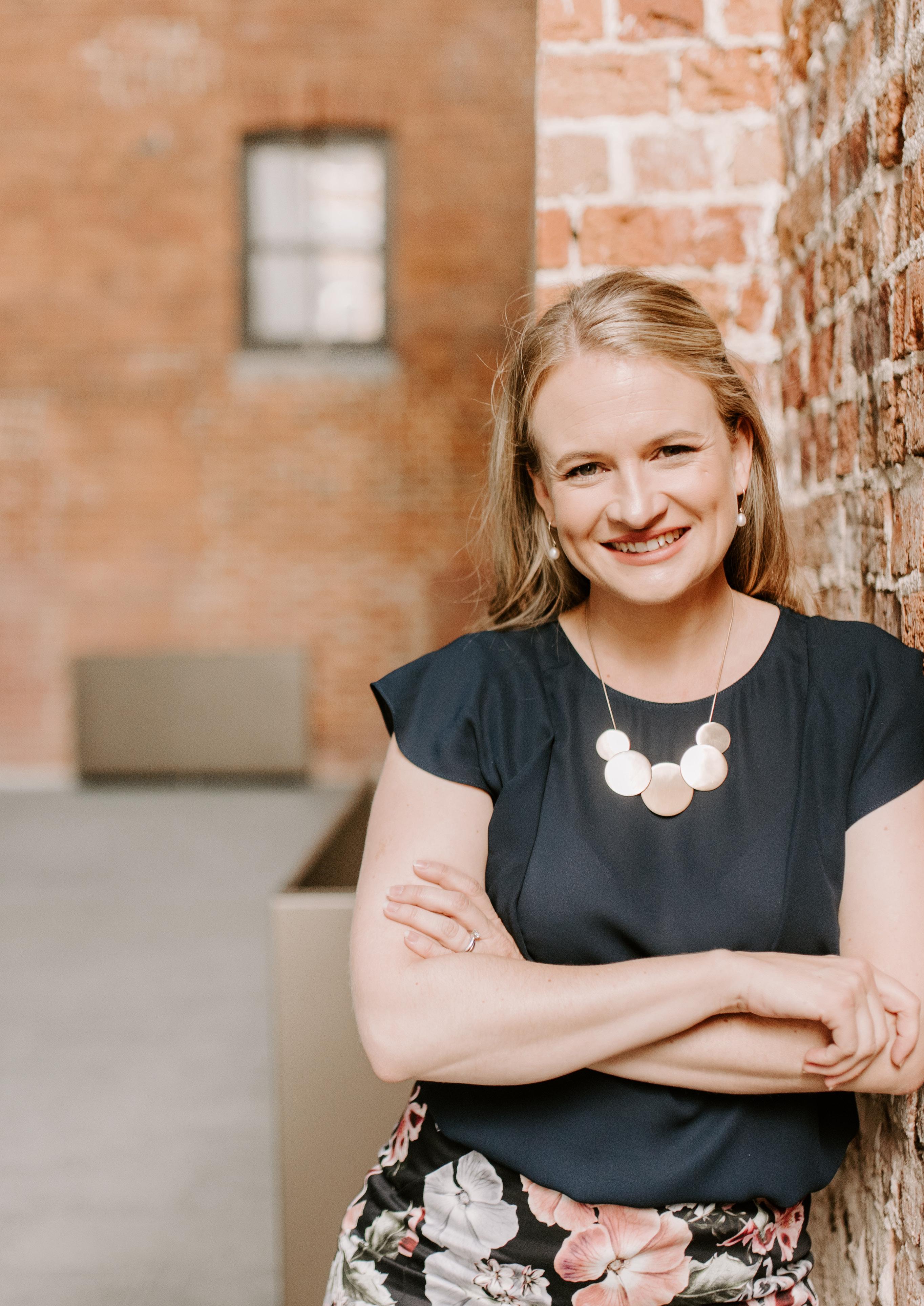
Alicia Curtis
is one of Western Australia’s most inspiring social and business entrepreneurs as well as an award winning speaker, leadership facilitator and community change maker. She is passionately driven by her purpose to ignite leaders to transform the world for the better. In 2014, she co-founded 100 Women, a collective giving circle which inspires everyday people to become powerful philanthropists. Over that time, 100 Women has granted $720,000 and impacted over 10,500 women and girls in over six different countries. Alicia has a Masters in Business Leadership and has numerous awards to her name including the 2019 Business News 40under40 List where she placed in the top 4, 2018 EY Social Entrepreneur of the Year in the western region, Westpac’s 200 Businesses of Tomorrow in 2017 and the Westpac & Australian Financial Review’s 100 Women of Influence List in 2014. Alicia’s leadership journey started at 12 years of age attending the first International Children’s Conference organised by the United Nations and then cofounding a children’s conference in Perth. Since then, she’s never stopped!
12
Photo: Alicia Curtis
f there were any silver linings in 2020, it would have to be the opportunity to reflect on what’s truly important to you, both personally and in society. A chance to stop, think and reflect on your goals and everyday habits.
Pre-COVID, it wasn’t hard to be caught up in the rat race chasing extrinsic goals like fame and fortune, thinking this will give us a fulfilling life. Yet research has shown us that living a meaningful and fulfilling life is driven through a focus on intrinsic goals such as developing deep relationships, taking care of your health and wellbeing, learning new things and contributing to something bigger than yourself.
Ancient Greeks to modern-day psychologists have pondered on what creates a good life. Many of these philosophers and psychologists agree an integral part of a life well lived is found in the notion of contributing to something bigger than yourself or the greater good.
What exactly is the greater good? The greater good is often described as the wellbeing of the whole of humanity. When you talk about contributing to the greater good, it can often mean addressing the wicked social, economic and ecological challenges we are facing - locally, nationally and globally.
So taking on these challenges together with others can give our lives a great sense of meaning and purpose. People who are strongly connected to purpose tend to be more resilient, motivated and live more satisfying lives. So where do you start to take on the challenges of humanity? If this seems too overwhelming, here are five ways to start contributing to the greater good.

1 2 3 4 5

Find and build community
Discover the local community within 10 kilometres from your house and activate your role as a citizen! Explore the community centres, local council, the school your children attend or the local community groups. Your local community - your family, friends, neighbours, even your local barista, need connection and nourishment! With loneliness rates going through the roof, it’s time for us all the re-engage in our local communities.
Reframe your work
Researchers have found that people see their work in one of three ways, as a job, career or calling. No matter what the job or industry, we all have the opportunity to see what we do for work through these three lens and the difference it can make isstartling. A job is done only for financial reward whereas a career elicits both a financial reward and career advancement such as status and success. Yet, those who tapped into their work as a calling, connecting how their work contributed to the greater good in some way, can fuel a sense of purpose, energy and deep satisfaction.
Use your influence to lead
You have a voice and you have more influence than you think! What are the causes close to your heart that ignite a fire in your belly? Consider how you can step up in your contribution using your skills, networks, time and influence. You could become an ambassador, a fundraiser, a committee member or board director. Think of the influence you have and use it!
Tell your story
The process of both writing and sharing your story can be personally fulfilling as well as helpful to others. Reflecting on your life, the obstacles and achievements, and how they have shaped you and your life today helps you create meaning in your life. Sharing this can help others feel less alone and be a tool for social change.
Connect the generations
Relationships with those who are young and old can connect us in with our part in the circle of life. You can share your knowledge and experiences with younger generations as well as be inspired by older generations and learn from their wisdom. Think about how you foster these intergenerational connections in your life.
Creating joy and meaning in life can be as simple as cultivating opportunities to help others. You can also challenge yourself to consider how you can step up and play a greater role in creating the society you want, pushing yourself outside of your comfort zone and making a bigger difference. The world needs people who serve a purpose beyond themselves, now more than ever!
FIVE WAYS TO CONTRIBUTE TO THE GREATER GOOD
I
13
Photo: Nathan Lemon (Unsplash)
IEmployee Disclosure
By Tasha Broomhall
f an employee has mental health issues are you likely to know about it? Do they have to disclose mental illness? This is a complex area where essentially if the illness is affecting an employee’s functioning (and their capacity to perform the core requirements of their job), then it is considered that they do have a responsibility to disclose the illness to their employer.
However, many employees will still choose not to if they don’t feel that it is socially safe to do so. The reasons why employees do not disclose mental health issues can be very simple, such as they feel that it’s not affecting their work performance and therefore is no one else’s business. Or the reasons can be quite complex in that it can be a mixture of previous negative reactions and therefore fear of discrimination, coupled with self-stigma or even lack of awareness of how badly their performance is being affected.
Many employees do report receiving negative responses to their disclosure, however, others report that they felt they were treated well and fairly. Often employees will not disclose unless they feel it is socially safe to do so. So how do organisations tackle this issue? The first step is to acknowledge that mental health is an important part of general health and as such you will have employees who are affected at times. Then understand that not all employees with mental health issues will be
impacted in their work functioning, but if they are then it is important that they feel safe to disclose their issues. This way the employer can work with the employee to meet their obligations to them and other employees, and provide appropriate support while still managing the organisation’s needs.
When implemented, appropriate strategies can greatly improve an organisation’s culture of mental health and wellbeing, to the point where employees feel that it is safe to disclose any mental health issues and get any support they may need.
It is not enough to talk about mental health and wellbeing on sanctioned days such as RUOK Day or during Mental Health Week. Creating a culture that encourages appropriate disclosure requires positive and proactive attention to raise awareness throughout the year. Awareness must then be supported by a deliberate strategy to increase the skills of leaders to have suitable conversations about mental health concerns and to respond appropriately to any disclosure.
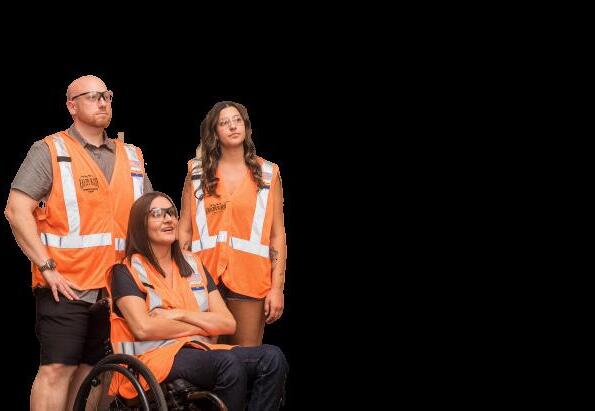
Privacy and Confidentiality
Supervisors and managers need to understand their obligations around privacy and confidentiality. If an employee discloses, or a manager suspects that a person is experiencing mental health issues, then the supervisors need to be conscious of only disclosing this information on a need-to-know basis. They may choose to forward the information up the supervisory chain (i.e. to their own manager) and to their Human Resources’ staff, however they have to be very cautious not to disclose it to others who do not have any responsibility in the situation. This is true even when reasonable adjustments are made to support the employee. The adjustments may be visible and obvious to the employee’s colleagues, so the supervisor needs to work with the employee to determine a communication strategy that the employee is comfortable with in terms of what is disclosed to colleagues.
Adjustments to enhance inclusion
Many leaders implement workplace adjustments to support employees to overcome limitations and barriers caused by physical injuries or impairments. Designing and implementing reasonable adjustments are not only important to consider in order to meet obligations around non-discrimination, they are also important for helping to enhance inclusion and participation for a range of diverse needs. Adjustments can help us to create more inclusive workplaces by overcoming the barriers that may have been designed by a history of how, where or when work has been traditionally done. However, many leaders report they are not sure how to do this for mental health issues.
14
Research indicates that 1 in 5 of us will experience mental illness in a year, and up to half of us in our lifetime. This high prevalence means mental health issues are certainly present in your workforce and therefore need to be considered when creating inclusion and diversity initiatives.
Reasonable adjustment/accommodation are supports or modifications made to an employee’s work conditions, work environment or work tasks to assist the person to overcome the functional impacts of their mental illness and to maintain their employment. The reasonability test requires that implementing the adjustment would not cause undue hardship to the organisation. [1]
Under disability discrimination laws in Australia, organisations are required to consider possible adjustments to assist a person to overcome any functional impacts they experience from a range of issues, including mental health issues. Having mental health issues doesn’t automatically mean a person will experience disabling impacts. For some, there will be no visible impacts in the workplace, however, if there is, employers are required to assess the employee’s needs in the context of their role and the organisation’s capacity to adjust. Making reasonable adjustments to the everyday work tasks of someone who is experiencing mental health issues is an important way to both connect with and support your employee’s needs and to meet your obligations.
Supervisors and managers need to have a broad understanding of the most common mental illnesses and their possible functional impacts in the workplace so that when they identify these impacts, they will be able to meet their obligation to implement reasonable adjustments where possible. When designing reasonable adjustments, we must balance the organisation’s operational needs (including possible impacts on other employees) with the needs of the individual employee. This simple model can assist in designing and implementing reasonable adjustments:
Design
1. Analyse (the core requirements of the job – e.g. key tasks, workflow issues, seasonal variations, KPIs, location/work area issues, etc.)
2. Assess (the employee’s functional capacity against these core requirements, using multiple sources of information – the individual, their supervisors, work output measurements, observations, etc.)
3. Identify (possible reasonable adjustments to accommodate for the functional impacts).
Articulate
The identified adjustments may require approval and discussion with HR/senior management. Articulate the process and decisions to the employee as you work through the process. Determine with the employee how any visible adjustments will be articulated to other employees.
Document
Keep a record of the process; the determined adjustments, time frame for trial and review, KPI’s for review and how the adjustments are being articulated to others.
Follow up and follow through
It is a good idea to start with a trial period and assess from there if the adjustments can or need to become permanent.
Some examples of adjustments:
• Allow telephone calls during work hours to doctor/ counsellor/other supports, and provide a private place to do so.
• Flexibility with work schedule – hours/start time/ work from home/change of duties.
• Minute all meetings and expectations to assist with memory and concentration issues.
• Don’t force people to attend social events if this is an issue for them.
The type of adjustments will need to be individually designed. There are some great resources to assist with this process:
http://returntowork.workplace-mentalhealth.net.au/ www.jobaccess.com.au www.jan.org
This is an edited extract from BLOOM! At Work. Available for purchase in hard copy and e-book.
Some examples:
• A data entry clerk who lives with social phobia and has been having panic attacks in the open reception area where their desk is located, responded well to being moved to a more private office space. Their role did not require them to be based in the reception area and so they were then able to work with fewer distractions and less distress. This was a reasonable adjustment as it did not affect them completing the inherent requirements of their job, and their organisation had the office space available to relocate them.
• A factory assembly line operator living with schizophrenia was on medication (which covered most of the symptoms of his illness but not all) but he experienced ongoing auditory hallucinations which he recognised were not real and yet sometimes found distracting. He was authorised to listen to music through an iPod as a distractor from his hallucinations. This assisted him in staying focussed on his task. An OHS assessment was done to ensure that he would not be at any risk by listening to the music rather than the noise of the factory.
• A senior lawyer living with bipolar disorder usually becomes unwell once every few years. However, due to the possible significant impact of his legal work, he has ongoing monitoring for his mental health. He has negotiated with his employer for them to liaise with his doctor and vice versa. If either party identifies signs that he may be becoming unwell, his fitness for work is assessed again.
Photo: Elevate (Unsplash)
[1] Hunter Institute of Mental Health 2014 15
Is y our organisation PSYCHOLOGICALLY SAFE?
When you embed mental health best practice into your workplace culture, everyone benefits. Make creating a culture of mental health and wellbeing enjoyable and sustainable. Minimise psychological risks and costs and maximise the return on your mental health investment.
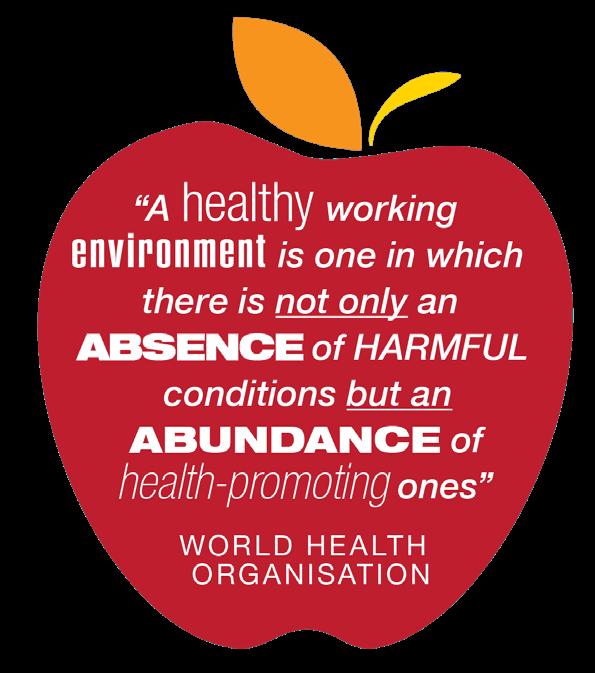


It is not sustainable to simply tick boxes around workplace mental health & wellbeing. Organisations need the systems and skills imbedded in their culture to both meet their obligations around psychological injury risk and to foster positive mental health & wellbeing - enhancing employee experience and performance. The foundation of this is developing a VALUES BASED CULTURE, supporting POSITIVE LEADERSHIP, providing EAP supports and enhancing these with proactive WELLBEING PROGRAMS.

Our range of customisable programs, online courses and resources combine the best academic research with our realworld experience. We help you to transform mental health and safety in the workplace while enhancing workplace cultures.
Equip your leaders and employees with the insights, tools and strategies they need to recognise and address workplace mental health issues both proactively and responsively.
bloomingminds.com.au
OF 16
Blooming Minds will help you to assess your needs, design a customised strategy & implement the actions to create a psychologically robust culture in your organisation. There are 4 key outcomes your psychological health and safety & wellbeing program should focus on:
* Prevention
* Early intervention
* Crisis response
* Support to Bloom
These can be achieved by implementing strategies in the 4 key areas of:
* Governance
* Awareness raising
* Skill development
* Behavioural integration
The Blooming Minds Mental Health Champions™ program integrates positive mental wellbeing in your culture so it becomes “how we do things around here.”
• Training for Leaders to fulfill their obligations.

• Mental Health & Wellbeing Policy & Procedure.
• Psychosocial Safety Assessment
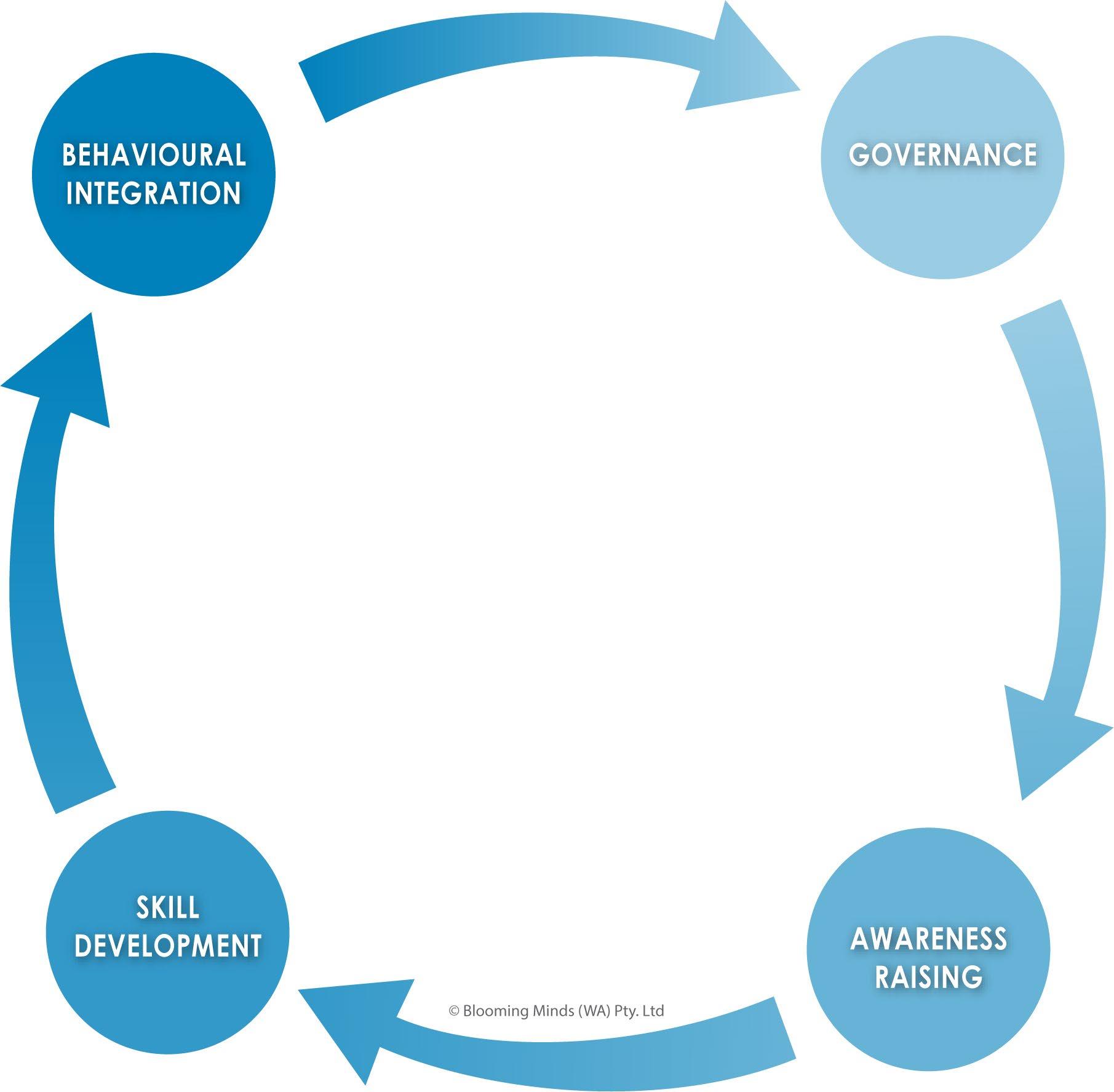
• Training for all employees to support positive mental wellbeing.
*Prevention
*Early intervention
*Crisis response
*Support to Bloom!
• Awareness, Skills & Risk Audit.
• Articles, information & video resources.
• Communication strategy to support awareness raising through the year.
Blooming Minds provides consultancy and development programs to assist organisations to understand the impact of mental health problems in their workplace, to minimise the human and economic impacts of employee stress, anxiety and depression and to develop cultures where your people will Bloom.
bloomingminds.com.au

17
Lisa Annese
By Tasha Broomhall

To understand more about diversity and inclusion in Australian workplaces, Blooming Minds’ Director Tasha Broomhall recently spoke with Lisa Annese from Diversity Council Australia.
18
Photo: Sam Affridi

TB: Tell us a little bit about the Diversity Council for those people who are not familiar with your work.
LISA ANNESE: DCA is a not-for-profit member organisation. We’ve been around about 30 years and we have over 600 members. Our members are organisations, workplaces across the country in a whole range of industries. What we do is we develop resources. Primarily evidence-based research, but we also run events and do a whole lot of communications’ resources that assist our members. Australian workplaces build their capability in diversity and inclusion across the whole spectrum of diversity dimensions, including gender, culture, age, disability, indigeneity, LGBTQ inclusion, et cetera, et cetera. Our ultimate aim really is to ensure that we create a labour market in the economy where diverse groups of people can maximise their potential and be included in our workplaces without any irrelevant kinds of barriers.
TB: What are the sorts of barriers that are there currently?
LISA ANNESE: It’s a really complex area to work in in the sense that if you were an organisation that was trying to increase the number of women in leadership you might take a different strategy than, if you were trying to improve the accessibility of your products for people with disabilities. What every organisation has in common is a legacy that the workplace was invented at a time in the industrial era, certainly that’s the workplace that we’ve adopted in Australia, where diverse groups weren’t really factored into the design of workplaces. The workplaces were designed for able-bodied people with no caring responsibilities, no risk of pregnancy. Certainly our economy in our world has changed so much since that initial inception of what a modern workplace should look like and especially in Australia where we have a multicultural workforce where we have removed a lot of barriers, legally. We have an age discrimination act, we have a race discrimination act, we have a sex discrimination act, but we actually still have invisible barriers that are part of the fabric of many processes and practices of workplaces, whether that’s through the way they recruit or the way they structure their work or the way in which they identify a pipeline for growth into leadership. I don’t think you could look at leadership in Australia and say that it accurately reflects the talent that’s out there so that they’re probably some of the themes that are in common amongst all workplaces, with respect to barriers for diverse people.
TB: Why does diversity, inclusion and participation matter?
LISA ANNESE: There’s probably two arguments. There’s a moral argument. I believe that it matters because everyone has a right to proper work and to economic prosperity and to fulfill their potential and execute their talents in accordance with their educational attainment regardless of who they are or what their life experiences are. But actually, the business argument is really compelling. Our research shows that organisations that do focus on diversity and inclusion are actually organisations that perform better. They have more productive workforces, they’re more innovative and they have lower risk. We’ve got so much research, which you can find on our website, that supports that. I’ve yet to find a piece of research that doesn’t support the idea that diversity-inclusive organisations and teams are not good for business. So there’s two reasons.
TB: I’ve heard a lot with working with leaders, particularly over the last couple of years, of this increased awareness of the concept of unconscious bias and it sounds like it sometimes gets talked about in terms of, ‘Oh, you know, we have unconscious bias’, as if maybe acknowledging it is enough without actually doing anything about it. I’m wondering if somebody is wanting to know what are those invisible barriers and structures in their workplace and they’re wanting to bring some consciousness to that, how do you recommend they start?
LISA ANNESE: That’s a really good question because organisations in Australia for the past 10 years have put a lot of money into unconscious bias training, thinking, okay, we’ll run the training as though that’s going to eliminate unconscious biases and we know it doesn’t. All it can do is increase people’s awareness. They exist. I think the first thing we have to do is not feel defensive about the fact that we may have implicit biases because we’re all human beings and we all have to be able to navigate this world and be able to make decisions based on the information that’s in front of us. So we use shortcuts to make those decisions and sometimes we rely on our feeling about an individual or a situation, and sometimes we rely on how much we engage and like a person. We know from unconscious bias research that if we like someone, we tend to rate them higher in terms of their potential in a job interview situation. It’s really important to be aware that biases exist and not to feel defensive about it but what you can do as an organisation, or an individual, is make a conscious effort to try and mitigate your own personal biases as much as you can. And that requires
19
Photo: Fauxels (Pexels)
effort on an individual’s part. It doesn’t happen automatically.
For example, you realise that you have a very homogenous management group, or a very homogenous workplace, but your customers and clients are really diverse and so you want to reflect that in the staff that you have, because you know that will help you deliver a better outcome. You have to make a conscious effort - how do I recruit? How do I promote? How do I reward?
How do I define what it means to be a person in my organisation and what it means to be a high performing person and what are the invisible messages that I send out all the time? I think once you start challenging that, then you need to figure out, well, where do I want to go? If I know that what I’m doing continues to deliver a homogenous outcome, then what changes do I need to make and how do I set people up for success? Because I have seen a lot of organisations focus on recruitment and getting diverse people in, but because they don’t do anything about the culture within the workplace, those people inevitably are set up to fail.
So, you then have to try and set diverse people up to succeed. You need to focus on the culture and the culture is essentially every interaction that every person has every minute of every day with everyone in the workplace. It’s about looking at those invisible rules about what do we value in our workplace? What do we reward? What do we punish? It’s a long-term process that requires a commitment to change and it requires something that’s very deliberate.
TB: From the perspective of inclusion and participation, what are the individual impacts of not being able to participate in workplaces and broader, in society? What are some of the impacts on an individual when there are barriers?
LISA ANNESE: That’s a really good question and it’s great that you asked that question because I think so often we focus on what’s the impact on business and the impact on organisations, if we do inclusion well, or if we don’t. But the impact of exclusion is pretty profound. There are obvious impacts of exclusion, especially if people are completely excluded from the workplace or they’re excluded from progressing in a workplace. The obvious impact is not being able to earn a good living or being able to earn a living. It’s as basic as that.
But we also know, especially from the work that’s been done around the impact of sexism and racism, and they are forms of exclusion, is that they have a lot of impact, even if it’s not one massive event and it’s just lots and lots of small events and every day exclusion, everyday racism, everyday sexism, everyday homophobia. It can have the same kind of impact as one large event in terms of how it makes an individual feel, how it sets people up to not want to be authentic anymore. So, you don’t get the best of an individual.
We also know that there are the organisations that rank low on inclusion and we’ve measured that inclusion at work index, they then rank very high on things like their risk factors. The number of complaints people might make around harassment and discrimination, also issues around engagement with the employer. So those things start to become much, much less effective. And I, we personally, haven’t done the research in this, but I know Beyond Blue has, and there are very real links into the wellbeing and health of individuals if they are constantly experiencing even small amounts of exclusion every day. So, it’s not good for individuals. It’s not good for organisations.
TB: I’ve had people I’ve been working with recently just talking about the fatigue. It’s constantly that they have to be on the alert to the times that they are being judged and excluded and not actively included and that they’re feeling quite fatigued by it. If your baseline energy set for the day is already fatigue, how do you
be dynamic and creative and participate to your best, because of historically having to carry that load for other people, it must really have an impact.
LISA ANNESE: And especially if you’re a member of a group that’s really visible, highly visible. We know for example, that from a report that’s been done, the DCA supported, on Islamophobia. The biggest targets of, for example, Islamophobic attacks are women because of their visibility. And usually Islamaphobic attacks happen to women when they’re with their children. So the fallout from even low levels of Islamaphobia, for example, it’s really, really, really significant. When you’re in a visible minority group, you actually can’t get away from it. You can’t hide your identity and so it’s exhausting for people to not only have to always be targeted for that, but also to always have to represent the whole group just as the one person. Not everyone wants to be a spokesperson or a representative for their group. So even when there’s well intentioned exclusion and what I mean by that is people who - they’re not being malicious in their marking out of someone’s difference, but in marking the map to be different and setting them apart they’d have the same impact.
TB: I had a girlfriend last year who commented that she can never just drive and be annoyed in the traffic. We were in the car and someone had pulled in front of me and I was like, ‘Oh for goodness sake!’ And she said, ‘Oh, that’s interesting, you’re allowed to react to that.’ And I said, ‘What do you mean?’ And she said, ‘Well, if I was driving and that person had pulled in on me, I wouldn’t have been allowed to react… because I’m wearing my niqab and if I react, then I’m an angry Muslim woman. Whereas you react and you’re just somebody who’s been cut off in the traffic’. And I really felt in that moment, my lack of knowledge and experience of something that affects her on a daily basis. It made me wonder how many other experiences she has on a daily basis I’m ignorant to, because they’re not my experience.
LISA ANNESE: It’s an interesting case that you raise, one, if you don’t have to think about your identity, you have privilege because people who are in the other group, think about their identity and how people react to them all the time. The example you used about driving, I think that, and I have not seen science around this, so I’m making a guess, but I think that when people are behind the wheel of a car, all their unconscious biases come out. If someone cuts them off in traffic, they will attack the person who’s cut them off based on their gender, their race, their age. The only time that gender, age, race doesn’t get used in angry traffic interactions is if the person is male and white because then you don’t attach their gender because they’re ‘human neutral’. But every deviation, you’re a woman, you’re an old woman, you’re an - all of those and I just think that’s so interesting. I have no scientific evidence for that, but I’ve observed that people become - all their biases come out when they’re stressed behind the wheel.
And every deviation from being human neutral. So you’re human neutral, you’re the straight white cisgendered able-bodied male and then being female, that’s one deviation away. And then every other deviation, it becomes - you become more and more, I suppose, vulnerable to exclusion, bigotry, sexism, all of those things.

20
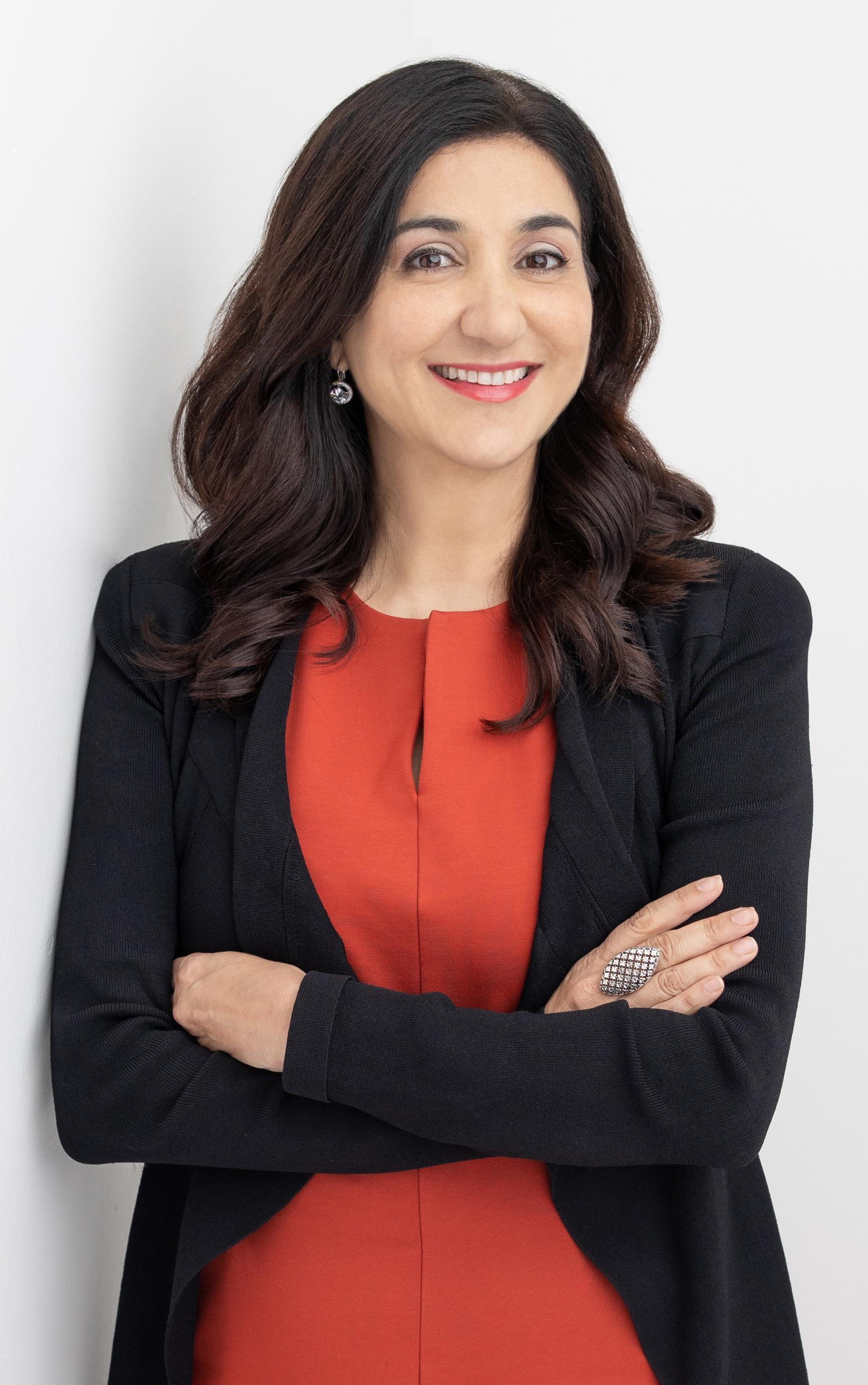
Lisa Annese has been the Chief Executive Officer of Diversity Council Australia since 2014. In this role she leads debate on diversity and inclusion in the public arena. Under her leadership, DCA delivers innovative diversity practice resources for Australian businesses and supports in them improving their inclusion capability. She has led a broad array of ground-breaking, evidence-based research, including Australia’s first national index on workplace diversity and inclusion, seminal research on the economics of the gender pay-gap and original work on building Asian Leadership Capability, as well as research supporting individuals being “Out at Work” and main-streaming flexible work. Connect with Lisa and DCA:
Twitter: @DivCouncilAus
Facebook: @DivCouncilAus
LinkedIn: Diversity Council

 Photo: Sam Affridi
Photo: Sam Affridi
21
Photo: Fauxels (Pexels)
eLearning for
Available for individual & group bookings
DEVELOP YOUR MENTAL HEALTH KNOWLEDGE AND SKILLS, ANYTIME, ANYWHERE.
Our eLearning courses and resources provide a wealth of workplace mental health and psychological wellbeing insights, lessons and strategies you can explore at your own pace.
The COVID-19 pandemic and economic slowdown are disrupting all our lives and businesses.

experience every year mental disorders
AND 5 IN 5 CAN ACTIVELY SUPPORT THEIR MENTAL WELLBEING
It’s a testing time, but it’s also an opportunity for self-reflection and selfimprovement.
Our eLearning resources can help you and your workforce take stock and come back stronger than ever.
Building Buoyancy: Coping with Stress and Change
Go beyond resilience and thrive, whatever life throws at you. Rising stress and anxiety levels affect our quality of life, relationships and general health and wellbeing, as well as workplace morale and productivity. This psychological self-care course helps you actively develop emotional buoyancy. You’ll learn strategies and techniques to manage stressful situations, stay calm under pressure, bounce back from adversity and find balance in life.
You’ll learn how to apply the five-step model of buoyancy to your life and:
• Look at mental health holistically and understand the mental wellbeing continuum.
• Develop mental dexterity and manage thought patterns that affect wellbeing.
• Develop stress agility and master stress management techniques.
• Go beyond resilience and live a values-based life.
• Nurture positive relationships and psychological wellbeing.







These eLearning programs have been developed by our Director Tasha Broomhall MSc (Psych) and our team of specialists.
This six-week eLearning course includes a copy of the BLOOM! Mental Health and Wellbeing eBook and a 12-month subscription to our A Year to Bloom eJournal.
GET STARTED LEARNING HERE , OR CONTACT US FOR GROUP BOOKINGS.
Blooming Minds works with organisations to enhance positive mental health cultures. Positively engaged employees are more productive and innovative, maximising their discretionary efforts.
bloomingminds.com.au
Leaders & all Employees
Workplace Mental Health for Leaders
The skills and tools leaders need to recognise and address mental health issues & build psychological health and safety.
Designed for leaders, this four-module eLearning course teaches you how to recognise common mental health issues, meet your obligations to your employees and balance the needs of your people with the needs of your business. You’ll learn how to:
• Recognise the possible symptoms and functional impacts of common mental health issues in the workplace.
• Fulfil your responsibilities when responding to mental health issues in the workplace, including with remote teams.
• Develop strategies to approach and address employees with mental health issues.
• Design reasonable workplace adjustments for employees with mental health issues.
• Develop a culture of psychosocial safety & wellbeing.
• BONUS MODULE - Leading Positively Through Times of Change.
Choose from two versions of the course, with the option of individually marked assessments and feedback that ensure you’re able to apply your learnings in your leadership role and workplace.
GET STARTED LEARNING HERE , OR CONTACT US FOR GROUP BOOKINGS.
Engaging with Empathy
Within this course we help you to, through curiosity and compassion, understand other’s experience. You will work to identify your own bias and how this affects your interactions.
Engaging with empathy is an ethos. This course is designed for anyone who wants to increase their understanding and practical application of empathy at work, at home and in life.
You will learn:
• The key elements of empathy & compassion & the relevance of both to your role.
• Understand the risks associated with a lack of empathy.
• Learn how to build & maintain empathy & compassion.
• Gain an understanding of others’ experiences in order to understand & meet their needs.
• Learn how to engage with others with empathy & compassion to gain a mutually beneficial outcome.
• Learn how to establish & maintain clear boundaries whilst maintaining empathy & compassion.
Choose from two versions of the course, with the option of individually marked assessments and feedback that ensure you’re able to apply your learnings in your leadership role and workplace.
GET STARTED LEARNING HERE , OR CONTACT US FOR GROUP BOOKINGS.

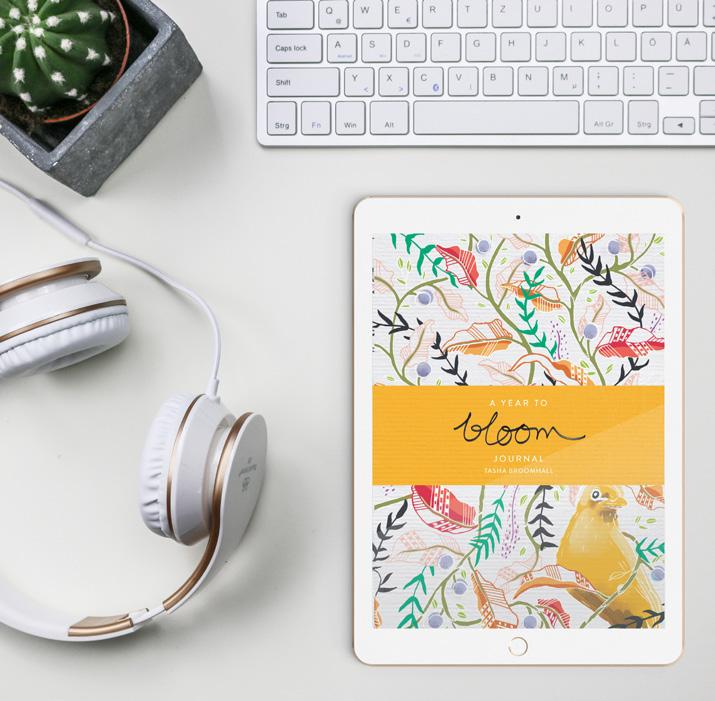


For more information about our eLearning courses contact: Anna Eames on 0409 922 155 or info@bloomingminds.com.au
https://bloomingminds.com.au/shop/






bloomingminds.com.au
TO PURCHASE
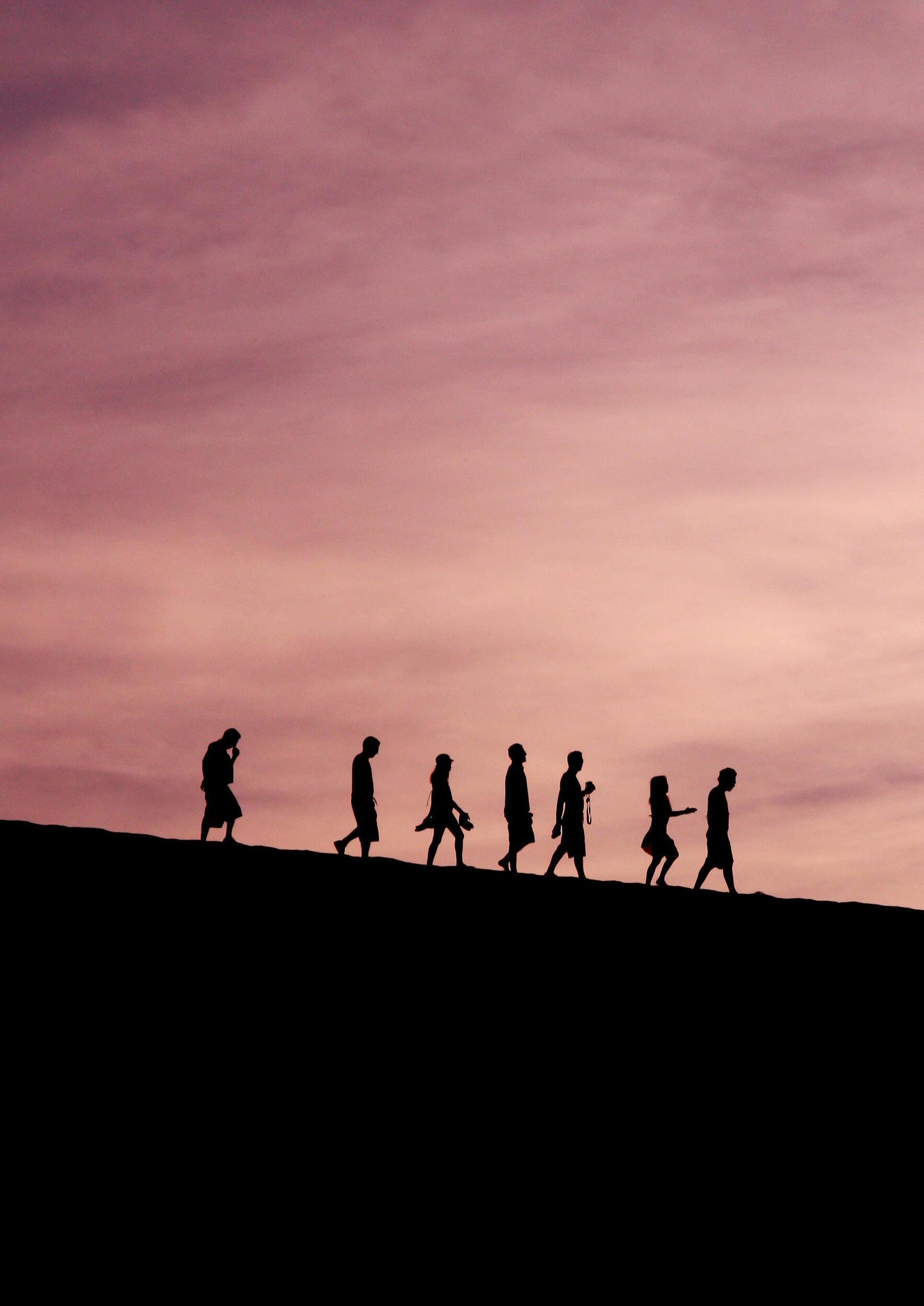
Are you an Empathetic leader?
Written by Tasha Broomhall
24

The Prime Minister has received considerable criticism of late for his reliance on the counsel of his wife, Jenny, to help him empathise with the experience of women. The criticism is that he should not have to consider a female staffer’s alleged rape and lack of subsequent support as if it were happening to one of his daughters, to be able to empathise.
However, Mr Morrison is not unique in empathising more with people with whom he identifies closely. Many of us experience a proximity bias. We feel more for those we perceive as closer to us. This is called inter-group empathy, where we experience more empathy for people who sit within the same groups as us, compared to those who sit in groups outside of ours. We can see this in many examples; the empathy we feel, the amount of news we consume and the direct actions of support we take when a natural disaster happens in our country, or in a country where people look, sound and live in a way similar to us. Compare this to our attention and actions when events occur in parts of the world and to people we’re not as familiar with. Even within our own country, the way we follow stories about people from our own cultural and socio-economic backgrounds, versus people who live very differently to us demonstrates this proximity bias.
If someone is like us then we have more empathy, pay more attention and push for action. This is an example of us othering. Rather than seeing our commonality with someone as a human, we have focused on the categories that differentiate us. We’ve separated from their humanness and see them as an ‘other’ instead.
The problem with this is that any leader, especially a Prime Minister, needs to be able to lead a diverse community, many of whom they may not have a direct line of comparison with. They need to be able to have empathy with experiences very unlike their own if they have any hope of representing us fairly and adequately. For too long this has not been considered important.
Your experience can create a point of reference for you but be careful not to confuse your experience with another’s. Your experience will not be universal and shouldn’t be imposed on others. Understanding someone else’s experience takes listening and reflecting, but listening is most important. Sometimes listening to someone’s experience can feel distressing, especially if the person has experienced trauma, discrimination or marginalisation. It’s a skill to learn to listen and hold that space for their distress and not try to railroad over it.
Empathy is about taking someone else’s perspective and seeing the world through another person’s eyes, without judgement, without trying to change them or to solve their problems, or to save them (especially if this is done to remove your own discomfort). The good news is that both listening and empathy are skills that can be learned.
If you wish to learn more about different types of empathy and build your skills in this critical area, for all people, and especially for leaders, have a look at our eLearning courses.
Photo: Jeyyng Sung (Unsplash)
25

Learning from the oldest continuous culture in the world
Written by Tasha Broomhall
Many Australians, both those born here and the almost 30% of us who were born overseas, have limited knowledge of Aboriginal and Torres Strait Islander cultures. Our history taught in schools has been woefully inadequate and, in many cases, inaccurate. Many of us still hold stereotypical ideas of Aboriginal people and cultures.
26
arlier this year, Senior Australian of the Year, Dr Miriam-Rose Ungunmerr Baumann AM said:
"We've gone and done the hard yards in learning how to speak fluently your language and understand how you live ... it's about time you come and do the same with us. I say that in a welcoming way."
We are fortunate to be able to learn from and connect with many Aboriginal Australian owned businesses that showcase the resilience and achievements of the oldest living culture in the world. There are businesses such as Bindi Bindi Dreaming who provide culture and food classes, Dr Tracy Westerman whose Indigenous Psychological Services provides professional development training across Australia, Gina Williams and Guy Ghouse whose performances in Noongar and English entertain and educate, and fashion brands such as Kirrikin which support Aboriginal artists, turning their prints into gorgeous garments.
One such business that was born out of the founder’s commitment to do work that both honoured her culture and history, while creating the future she desired, is Aboriginal Insights, owned by Jolleen Hicks. Almost 8 years ago Jolleen was diagnosed with a brain tumour and after having successful brain surgery began her consulting business in 2013. Aboriginal Insights
provides cultural education to individuals and workplaces to empower the spaces of Closing the Gap and Reconciliation.
Jolleen started her business because she wanted to live authentically and with the greatest respect for her ancestors and family. She knew that she had knowledge, skills, and insights that would help workplaces and she wanted to be able to participate more in her own Community. Jolleen’s book Essential Aboriginal Insights – A Guide for Anyone Involved in Closing Gaps in Australia is a great starting point for someone wanting to learn more, supported by her cultural education workshops, and online learning courses and tools.
‘I am blessed to be both a Teacher and Student participating in the two worlds that exists in this country. The Mainstream Western World, and the Aboriginal Cultural World.”
Reflecting on the hard work and commitment it has taken to develop a business from scratch that is authentically aligned with her values Jolleen says, ‘I am really proud to be in a space that is supporting our country on its Reconciliation journey. I am willing to talk about and raise awareness of sensitivities in a way that keeps Australians engaged and addresses the barriers preventing respect and relationships from

Photos: TDM Visuals
E
27
Jolleen Hicks
being achieved between Aboriginal and nonAboriginal Australians. Racism is a big problem, and many Aboriginal people struggle with this on a daily basis. For our parent’s and grandparent’s generations, they grew up in an environment where racism and discrimination was both normalised and legal. Their experiences and the trauma they carry is different to my generation, but some of it has been passed to us. We see this trauma in the general mistrust that Aboriginal people have towards the mainstream western system – this extends to people, Governments, organisations, systems, institutions, and service providers. We are starting to talk about systemic racism. This is an essential conversation that must lead to action that involves the removal of systemic racism across Australian society, listening to Aboriginal people, and supporting and empowering Aboriginal people towards selfdetermination – in control of our livelihoods. This includes support for a Voice to Parliament. Aboriginal matters in Aboriginal hands.’
Jolleen states that we are not responsible for the gaps of inequality that exist for Aboriginal Australians, or for the broken relationship between Aboriginal and non-Aboriginal Australia. However, these breaks do need to be reconciled and this can occur if the current generation of Australians respond to this truth. There are two essential steps that are required to reach Reconciliation. These are Truth and Healing. It can be incredibly uncomfortable to listen to others’ truths, experiences and pains. Yet if we continue to ignore these, healing is disrupted. Seeking to learn, with wide open ears, an open heart, and

being willing to drop our defences so that we can hear, instead of simply react, is important. Be willing to play your part.
‘Everyone can benefit from cultural education. This country is on a Reconciliation journey, but for us to reach that aspirational place called Reconciliation, Australians, as individuals, must decide to be part of the journey, and in deciding to be part of Reconciliation, make a commitment to ongoing cultural education. Education is key.’
To connect with Jolleen and learn more about her work visit www.aboriginalinsights.com.au
To increase your knowledge of Aboriginal and Torres Strait Islander cultures connect with local Aboriginal and Torres Strait Islander owned businesses and services in your area, such as:
Bindi Bindi Dreaming
https://www.bindibindidreaming.com.au/
Dr Tracy Westerman, Indigenous Psychological Services
https://indigenouspsychservices.com.au/
Gina Williams & Guy Ghouse
http://www.ginawilliams.com.au/
Kirrikin
https://kirrikin.com/
For a list of local Aboriginal owned businesses check out: Aboriginal Business Directory WA https://abdwa.icn.org.au/ or the Indigenous Chambers of Commerce in each State/ Territory

Photos: TDM Visuals
28
Self-Leadership Through Change
By Tasha Broomhall

Change can elicit different reactions in different people. How do you respond to change? Do you embrace it enthusiastically, shy away from it, or reject it outright? Change can be difficult, particularly when it happens in your workplace, but having the right tools and strategies can help you manage it, and ultimately, thrive on it.
Positive self-leadership requires acceptance and understanding of your emotional needs during such times.
Positive self-leadership should assist you to:
• Understand and accept your and other’s emotional responses to change.
• Help yourself to develop strategies to manage stress proactively.
• Help yourself to improve positive mental wellbeing.
• Develop individual strategies to build and enhance effective relationships and supports within your organisation.
1. MODEL OF RESPONSES TO CHANGE
 The above figure by L. Leahy and N. Chamberlain outlines possible emotional reactions to change.
The above figure by L. Leahy and N. Chamberlain outlines possible emotional reactions to change.
29
Photo: Chis Lawton (Unsplash)
It is important to understand that through times of change, our experiences will be different; we will progress through the change reaction curve at different paces, some individuals will not experience each emotion, some will sit with one response for longer than others. When we have different responses to our peers, it can increase our sense of disconnection therefore make it harder for people to work collaboratively and to progress the change initiatives. It is important to recognise each emotion and have a strategy to manage emotional responses as they occur.
Knowing where you are on the curve can assist you to equip yourself with the appropriate supports to help you transition as required.
One strategy suggested by Leahy and Chamberlain is to reflect on where you are at in the reaction cycle, and how you can get your needs met. It can also be useful to discuss these possible reactions with your colleagues and the differences in where each of you are on the reaction cycle in order to support others.
2. STRATEGIES TO MANAGE STRESS
In her famous TED talk on stress, psychologist Kelly McGonigal explains that rather than trying to calm down your pounding heart when stressed, you instead view the stress reaction as your body getting ready for the challenge, giving you the energy to deal with the issues. Your pounding heart is preparing you for action and faster breathing is getting more oxygen to your brain so that you can think more clearly. She argues that how you think about stress matters. A Harvard University study was conducted that asked one group of participants to rethink their bodies’ response to stress. The group that positively reframed their stress responses experienced a less negative effect from stressful situations.
We recognise that many people react to change with stress responses; uncertainty and change can elicit these responses. You can use the change as an opportunity to demonstrate and encourage yourself to positively engage with proactive stress management strategies. This way you are able to take positive actions rather than feel overwhelmed by the stress.
Deci and Ryan, two educational behaviourists, identified a model with three components that they believe affect our motivation and performance in different settings. These components are competency, control and belonging.
Competency – we need to feel that we are competent and that we have the skills and tools required to do the job – from brushing our teeth to pulling together an end of year financial report. We don’t like to feel as if we are in over our heads, or that we don’t have the required skills and competency to do what is required of us. This links back to our definition of stress.
Control – we need to feel that we have a choice and some autonomy over the way in which we go about our lives. A core factor is that we often don’t like change. As Mark Twain said, “the only person who likes change is a baby with a wet diaper”. Even then, it’s not really the process of change that the baby likes, it’s the result, right?
Belonging – we need to feel that we belong to something or to someone and that we are accepted, valued, respected and cherished – by someone or some group. We are social creatures and it is not just about being part of a group but importantly, we want to feel that we are a valued member of the group and that we contribute in meaningful ways.
One way that you may use these three components is:
1. Think about a situation that causes you stress.
2. Next consider what is the core issue that is triggering the stress?
a) Is it a lack of competency? Are you lacking the necessary skills and abilities?
b) Is it that you don’t feel that you have enough control?
c) Perhaps you feel that others are trying to control you?
d) Maybe you feel you have too much control and you are daunted by it?
e) Perhaps there is an issue around belonging? Do you feel disconnected, alone, isolated, misunderstood or unappreciated?
3. Finally, determine possible strategies to alleviate the stress in that area. For example, if you are feeling stressed about the amount of work you currently have, stop and think. Are the tasks difficult because you feel that you don’t have the skills needed to complete them? Is it that the workload feels out of your control? Do you feel undervalued in your job?
Maybe you have the skills to do the job, but you feel that you cannot control how much work comes in,

30
Photo: Christina Morillo (Unsplash)
because you are short-staffed. What can you do to get some control back? Perhaps you can delegate some tasks to a colleague, or ask your manager for a prioritised list of tasks.
There are many different stress management models. This one is a simple tool that you can use to help deal with issues that may arise around periods of change. If you are experiencing a high stress response that is distressing to you or that is impacting on your functioning or wellbeing then it is advisable to seek specific individual support from your EAP provider.
3. POSITIVE MENTAL WELLBEING
Shawn Achor conducted a program with KPMG employees in the lead up to tax time. The employees were instructed to choose one of five activities that correlate with positive change to personal wellbeing:
1. Jot down three things for which they were grateful.
2. Write a positive message to someone in their social support network.
3. Meditate at their desk for two minutes.
4. Exercise for 10 minutes.
5. Take two minutes to describe in a journal the most meaningful experience of the past 24 hours.
The participants performed their activity every day for three weeks. Several days after the training concluded, they evaluated both the participants and a control group to determine their general sense of wellbeing. How engaged were they? Were they depressed?
On every metric quantifying optimism and life satisfaction, the experimental group’s scores were significantly higher than the control groups. When both groups were tested again, four months later, the experimental group still showed significantly higher scores in optimism and life satisfaction.
Just one quick exercise a day kept these tax managers
happier for months after the training program had ended. Happiness had become habitual. Learning resilience and positive wellbeing skills can be a positive step in helping you to manage your mental wellbeing proactively.
4. EFFECTIVE RELATIONSHIPS AND SUPPORTS
In further research, Achor, Ben-Shahar and Stone determined that social support indicated as highest predictor of happiness during high periods of stress. They suggest from their research that support received is important but support given is an even more important factor in sustained engagement and happiness.
• How can you increase supports and model this for others?
• How can you increase supports for each other and increase sense of belonging and connectedness within your team and to the broader organisation?
Reference
1. L. Leahy & N. Chamberlain, “Surviving Change”, Strategic HR Review, Vol 7, No. 6, 2008
2. Deci, E. L., “Effects of Externally Mediated Rewards on Intrinsic Motivation”, Journal of Personality and Social Psychology, 18; 1971
3. “Positive Intelligence”, S. Achor, https://hbr.org/2012/01/ positive-intelligence
4. K. McGonigal, TED talk, https://www.ted.com/talks/kelly_ mcgonigal_how_to_make_stress_your_friend

31
STRATEGIES to Relieve Stress
By Tasha Broomhall

What strategies do you currently use when you feel like everything is piling up and you’re about to flip your lid?
It’s really important to come up with what works for you individually, but here is a list of suggestions to get you started:
32
Photo: Craig Broomhall





EXERCISE
This is very effective for a variety of reasons. Exercise acts as an endorphin releaser as well as medication in motion. It takes the focus off your problems as you focus on walking or running or whatever you like to do. It must be noted however, that someone who is prone to panic attacks may feel greatly distressed by the increased heart rate and sweating that can accompany exercise. The physiological responses to exercise can feel a lot like the physical symptoms of anxiety. A person such as this may need more calming methods of “in the moment” stress management.
PAINT THEM BLUE
This mental trick works really well for many people when they clash with someone. If you are unable to talk reason with a person, or need to mentally distance yourself from someone who is being aggressive, arrogant or just very annoying, then do the following: imagine a big thick paintbrush with lovely blue paint on it, and in wide, sweeping strokes cover them in your mind with this blue wash. This serves to create a mental barrier between you and the person. You can imagine yourself safe from taking on their issues and protected from their negativity. You will want to do this inside your head, not physically moving your arm as if you are painting them –that might make you feel and look a bit odd! Blue is a calming colour which is helpful, you can just imagine how your stress levels would be if you tried to paint them red!
SMILE
This simple act is excellent for a number of reasons. Have you ever heard the advice to smile when you answer the phone? Why is this a good idea? A smile releases endorphins, so you are tricking your brain into thinking you are happy and eventually it can in fact make you happier. Importantly a smile can also act as a social barrier between you and someone. In situations when it is not appropriate to let out our frustration or to say what we really think, a smile and nod can help to not inflame the situation. A smile can also remind us to keep the stressor in perspective and to maintain our boundaries.
YOGIC AND ABDOMINAL BREATHING
We have a tendency to breathe rapidly when we are feeling stressed. By concentrating on your breathing patterns, you can distract yourself as well as calm yourself down. The average adult breathing rate is 12–16 breaths per minute (don’t try to count yours because as soon as you focus on it, it will change!). A person with an anxiety disorder is more likely to be breathing at over twenty breaths per minute as their usual breathing rate. These people are already somewhat aroused, and it may not take much stress to push them into a heightened state of stress or even panic. By practising slower breathing in the moment, they may be able to alleviate this risk and manage the symptoms as they experience them. By practising these techniques repeatedly, they may also be able to lower their usual breathing rate into the normal range.
Will one of these techniques work for you? It’s a good idea to choose and commit to using a technique to relieve stress, so that when you start feeling your stress build, you won’t have to think too much about it; you can simply implement the technique. In this way you are immediately taking responsibility and claiming back control over how you manage stress.
This is an edited extract from BLOOM! Mental Health and Wellbeing. Available for purchase in hard copy and eBook.
 Photo: Brian Mann (Unsplash)
Photo: Daniel Chekalov (Unsplash)
Photo: Engin Akyurt (Face)
Photo: Suad Kamardeen (Unsplash)
Photo: Brian Mann (Unsplash)
Photo: Daniel Chekalov (Unsplash)
Photo: Engin Akyurt (Face)
Photo: Suad Kamardeen (Unsplash)
33
Photo: Damir Spanic (Unsplash)
CEOs for gender equity
By Tania Cecconi with Tasha Broomhall

Tania Cecconi is the Chief Executive Officer of CEOs for Gender Equity. The Western Australian organisation was convened in 2012 by the then Commissioner for Equal Opportunity. Tania joined in 2016 as the first paid executive officer. Whilst a lot of work was being done to improve gender equity at a boardroom level, there wasn’t anyone working with CEOs in Western Australia, and this has been the focus for the organisation. Blooming Minds Director Tasha Broomhall recently chatted with Tania to learn more.
TB: Can you tell us a little bit more about CEO’s for Gender Equity?
TANIA CECCONI: I head up over 50 CEOs for gender equity in WA… We’ve got the highest gender pay gap in Australia and the most amount of men in senior roles. We work with CEOs to reframe gender equity as a business opportunity, as well as the talent opportunity.
TB: What has been achieved since convening in 2012?
TANIA CECCONI: Working in gender equity is such a long, long game. We’re dealing with entrenched biases. We’re dealing with the top end of town and we’re dealing with workplaces that have yet to catch up with the seismic shifts we’ve seen even over the last 30 years.
When I talk about these seismic shifts, we’ve seen a huge number of women enter the workforce. We’ve seen huge numbers of women graduate in higher numbers than men. We are now seeing women wield significant amounts of influence via spending power. Women influence 75 to 80 cents in every dollar and that’s not just on handbags and shoes. So quite often people will say, “Oh, you know, society needs to change”. Well, society has changed enormously, absolutely enormously, just over those last 30 years. We need workplaces to start catching up.
What I have seen change is when I first started, the conversation around gender equity was all about fixing women. Women could not be seen at the top because women couldn’t access senior roles because they didn’t have the same amount of education as men did. They hadn’t enjoyed unbroken trajectories to the top the same way that men had. It was often cited that women couldn’t juggle family and work as if they were mutually exclusive options. So I think we’ve seen the conversation shift enormously. No one in my group is talking about fixing women right now.
TB: That’s really fascinating to think about that shift in the conversation… Why is there still a difference in the boardroom, then? Why is the workplace not keeping up with the societal changes?
TANIA CECCONI: Well, it’s tricky, isn’t it? Because, like I said, it’s those shifts that we’ve seen that have yet to translate into the workplace. And many of these organisations were established by men for men, which means decisions and the processes and the systems that support those decisions around recruitment. How we promote talent, how we retain talent, are inherently biased. There are systemic barriers, if you like, I don’t believe there’s overt discrimination in the workplace. It’s very systemic. It’s organisational and you just have to look at the numbers to see that it doesn’t explain away why it’s still happening. But many of our CEOs do reflect on what they can do better and it’s quite confronting for them, personally.
TB: What are some of the things that they can do better at that CEO and senior leader level?
TANIA CECCONI: Number one, with any transformation in the workplace, we see that CEOs need to be really clear about a compelling reason to bring along their people. We see striving for gender equity and better gender balance at all levels within the business requires a really strong, articulated, compelling case… So that starts with a “why?” It starts with their personal why. Why it’s important to them, but also professionally,… why it’s important to their business,… to their stakeholders, why it’s important to their customers, why it’s important to their people. They need to clearly be able to articulate across all of those dimensions. So that takes a bit of time. Quite often, CEOs will cite having daughters as a real driver for them. And it’s a real driver because it’s not until their daughters hit high school or university that they begin to hear about some of the challenges that they, their girls, may face.
TB: Interesting the different perspective that might give them. What are the implications for our society if we don’t actually get gender equity?
TANIA CECCONI: Well, I focus on the workplace perspective, which does have a knock-on effect on society. I think we’re seeing more and more leaders articulate and take a stand on issues that matter whether it’s Alan Joyce, head of QANTAS, talking about his commitment to LGBTQI, we’re seeing a lot more CEOs take a stand on their commitment to mental health and the campaigns that we see supporting mental health awareness. I think what we’re seeing is that we’ve more CEOs articulating their commitment to a better balance in the workplace, more equity, more fairness. Number one they enhance their reputation, but they become more of a magnet to attract female talent. So it’s basically selling to society more broadly and to women and to men that women are welcome. They represent 50.4% of the population, it doesn’t make sense to exclude them. So, I think that’s one of the critical messages that CEOs have in terms of their impact on society.
It’s to say that we are part of the ‘rah-rah’ movement that says women can rule the world. Yes, we can. That’s been demonstrated globally, particularly women’s responses as leaders to COVID globally compared to some of the male leaders’ responses. But, it’s not about the saying that women are empowered, it’s men removing the barriers, “We know you’re empowered, here, we’re opening the door for you to allow you in”. Typically those systemic barriers have locked women out unconsciously.
TB: And what’s the result of that when women are locked out? What does that do to a business?
TANIA CECCONI: Well, more importantly, when it does include
Background Graphic: Gender Pay Gap Australia 2000 - 2020 https://www.wgea.gov.au/publications/australias-gender-pay-gap-statistics#national-gpg
(ABS Data)
34
Photo: Rhiannon Shine
women, then men and women more broadly see that there’s a better commitment to fairness and equity, which has a knockon effect in terms of people’s wellbeing. We know that having more women in the business demands a different type of a leadership style… What that means is that it brings a different style of leadership to the workplace. It’s more collaborative. So, the female type of leadership brings a different level of collaboration, care and compassion. Similarly, it’s an opportunity, especially post-COVID, to rewrite the male archetype of leadership for men now because of the accelerated push to work from home has demanded more check-ins. It has led to more collaboration and demanded men and male leaders to operate in a different way and I’m finding that they’re responding to it really, really positively… They’ve seen mums and dads at home with the bookcase behind them or with the kids. There’s really a broader connection that typically would never have appeared in the absence of COVID.
I am optimistic in terms of how this has impacted organisations. I do appreciate that women have borne the brunt, but many of the progressive organisations with whom I work are looking to hang on to the gains that they’ve made and the lessons that they’ve learned to retain as much as they can of this crisis, going forward.
TB: The world has changed so significantly this last year. If you’d predicted any of this last year, we would have thought you were absolutely fanciful in your ideas and within a really short timeframe, our world was turned on its end, and it is a real risk to not take this as an opportunity. I think that we’ve had this real opportunity to explore something very new and different. There are so many benefits that can come from it. We need to take a more nuanced approach to meeting people’s needs. But modern organisations should be able to do that.
TANIA
CECCONI:
Employees are demanding it, men and women are demanding it, women and men don’t want to go back to the way it was. Recently at a CEO summit, with 28 CEOs from WA and over on the East coast, one of the CEOs cited an example where they talked about flexible working. They’ve got a new policy, and it’s not even a policy, it’s simply a set of principles guiding people. Letting people know that it’s available to them, giving them the rationale for it. Here you are going talk to your manager about it and negotiate what’s important to you. Conversely, I’ve heard of other organisations who didn’t take any time off to work from home during COVID. I have heard of other organisations who respond with every permutation of what working from home would look like, including parttime options. As we know, typically not every permutation generated by HR is going to cover the full gamut of what people want. I’m hearing different responses, but I am hearing mostly an authenticity and a real commitment that’s heartfelt in recognising the shift and that basically life before wasn’t so tenable and sustainable.
TB: Absolutely. We can’t look at the past with rose-coloured glasses and want to race back towards it.
TANIA CECCONI: That conflict between work and family is real and how do we manage that? Because it should not be mutually exclusive options, particularly for women.
TB: For people’s mental wellbeing, that conflict is such a stressor. It’s a position that particularly women often report feeling like they’re either a good mum or they’re a good employee or a good leader. It feels like this need to be perfect in all those areas means that they end up feeling like they’re not actually achieving in any of those areas and start to feel a real disconnection from themselves and their values and what they were trying to create in their life. There’s much higher risk leading to burnout by trying to stretch yourself too much, but also of mental health issues settling in because the anxiety of trying to manage all of those multiple roles in an unrealistic way, it’s just not sustainable.
TANIA CECCONI: And whilst women have a role in managing their workload and their commitments at home, what we’re asking CEOs to recognise is that conflict is real. How do they provide an environment where people’s anxiety isn’t peaked in having to manage, like I said, family and work commitments. We’re asking CEOs to better understand the lived experience of the parents, dealing with aged parents as a sandwich generation, it could be sporting commitments if they’re an elite athlete…
TB: And flexibility for people who have got other health issues, particularly chronic health issues or issues that lead to disability.
Absolutely flexibility is relevant there.
TANIA CECCONI: Yes, and the driver here is about talent. Why do we want to just leave the door open for a certain archetype, which for example, can work 60 hours a week? Who doesn’t have any other responsibilities beyond turning up to work every day? If we want to explore and tap into the talent pool beyond that baby boomer mindset, we need to be able to understand how we can engage those different segments of that talent pool. It’s not good enough to just rely on one discrete pool, particularly when we’re operating in such volatile, uncertain, complex, and ambiguous environments. One homogenous set of thinking is not going to deliver us the solutions, the creativity, the innovation that we need to go forward.
TB: What’s your vision for gender equity in workplaces?
TANIA CECCONI: I suppose it’s having a gender balanced workplace. I’m a numbers person. I think the best way to measure is to have 50-50 at all levels and that does have a huge impact on pay gap. That means we have an equal pay gap because pay gap measures the average salaries and earnings of men versus women in the workplace. So 50-50 means that there’s 50-50 at the top. So what that also means it’s not to the exclusion of recognising broader diversity and inclusion, but ultimately we have to start somewhere and those numbers and that attraction, that retention focus, that promotion of talent and focus on talent, means that some of the leaders are in place. That means that flexibility is mature and there is a high level of acceptance. It means that the organisations are mature in how they discuss and agree outcomes. There’s maturity around having jobs that are designed for agency. So these are all the standard levers, if you like, that are healthy indicators of healthy workplaces and healthy people. So that’s my vision. It isn’t just about, (this is going to sound counter-intuitive), it isn’t just about women. But women at all levels deliver those opportunities.
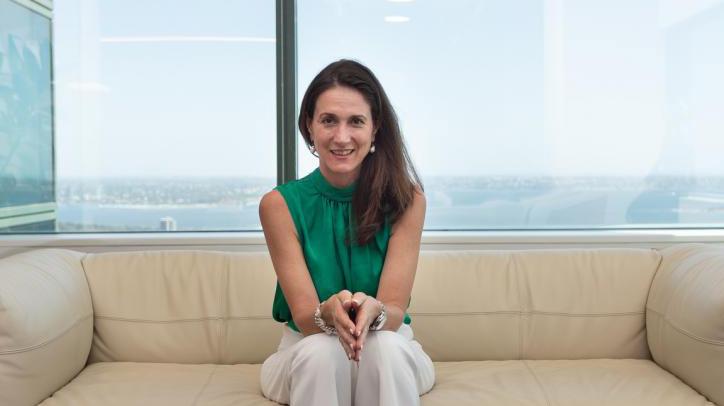
Readers who are interested in exploring these values for themselves and how they can shift some of those systemic barriers that maybe they’re helping to prop up, can find out more about Tania’s work through her social media.
As a senior manager and executive, Tania has worked across the public and not-for-profit sectors, specialising in post-compulsory education, training and employment. She is motivated by improving the workforce participation of vulnerable groups in society, particularly women’s participation. As CEOs for Gender Equity’s first executive officer, Tania has successfully shifted the conversation in Western Australia from fixing women to fixing organisations. She has brought a game changing proposition and strategy to CEOs for Gender Equity that ensures all CEO members assume responsibility and accountability for creating an inclusive and gender diverse culture.
If you’d like to learn more about the work of CEO’s for Gender Equity, you can get in touch here:
• info@ceosforgenderequity.com.au (CEOs for Gender Equity email)
• Twitter: @CGE_CEO (Tania’s account) and @CGE_WA (CEOs for Gender Equity account)
• Linkedin: Tania Cecconi and CEOs for Gender Equity
• Website: www.ceosforgenderequity.com.au
35
Photo: Gabriel Oliveira

 FBy Kelly Ho & Janet Stevens
FBy Kelly Ho & Janet Stevens
or some of us, we love nothing more than curling up with a good book, getting lost in stories; the characters’ lives, personalities and their adventures. Some of us, however, are not such avid readers, and may find that we do not have the time, the inclination, or the attention span to sit and read. But multiple studies have shown the various benefits of reading, and the positive impact that this can have on our wellbeing.
Reading improves your vocabulary and your knowledge of the world. It can open minds to different ideas which may challenge our own and cause us to view things in a different light. A study by Delgado, Vargas, Ackerman and Salmeron, published in 2018, demonstrated that reading also improves written comprehension skills. Whilst this might seem obvious, the results also found that paper-based reading had a greater effect in improving written comprehension skills than screen-based reading.
It is not only written comprehension, vocabulary and knowledge that are improved through reading. Other studies have shown that reading has benefits for both your physical and mental health. Similar to doing yoga, reading can reduce stress and has been shown to reduce a person’s blood pressure and heart rate. An article published on Healthline.com discussed the broadreaching benefits of reading such as:
• Reading strengthens your brain;
• Reading increases your ability to empathise;
• Reading helps to prevent age-related cognitive decline;

• Reading can help to alleviate depressive symptoms; Reading might even help you to live longer;
• Reading prepares you for a good night’s sleep.
The connection between reading and a good night’s sleep has been explored in other studies. Reading can be part of a regular sleep routine however studies do caution that print-based reading is preferred as prolonged use of screens close to bedtime can interrupt or have a negative impact on the quality of sleep.
Finally, but equally importantly, reading can be a great way to bond with children. This can build positive associations with books and children will find reading enjoyable later in life. Reading at home can boost a child’s performance at school, increase their self-esteem, and improve their communication skills.
The positive benefits of reading are numerous. Reading can be a source of pleasure, relaxation, learning, or all three. Ask friends or relatives for recommendations, or pop down to your local library to check out their most recent offerings, then grab a cuppa, sit back, get reading and reap the rewards!
[i] Delgado, P., Vargas, C., Ackerman, R., & Salmerón, L. (2018), “Don't throw away your printed books: A meta-analysis on the effects of reading media on reading comprehension.” Educational Research Review, 25, 23-38.
[ii] Kong, Y., Seo, Y. S., & Zhai, L. (2018), “Comparison of reading performance on screen and on paper: A meta-analysis.” Computers & Education, 123, 138-149.
[iii] Stanborough, R. (2019), “Benefits Of Reading Books: For Your Physical And Mental Health.” Healthline. https://www.healthline.com/health/benefits-of-reading-books.
[iv] Mayo Clinic, (2020), 6 Steps To Better Sleep. https://www.mayoclinic.org/healthylifestyle/adult-health/in-depth/art-20048379
[v] Chang, A. M., Aeschbach, D., Duffy, J. F., & Czeisler, C. A. (2015), “Evening use of lightemitting eReaders negatively affects sleep, circadian timing, and next-morning alertness.” Proceedings of the National Academy of Sciences of the United States of America, 112(4), 1232–1237. https://doi.org/10.1073/pnas.1418490112
[vi] Scholastic Corporation. (2014), Kids & Family Reading Report (5th Edition). https:// www.scholastic.com/content/dam/KFRR/PastReports/KFRR2015_5th.pdf?affiliate_ id=21181&clickId=3248971872
[vii] Rizzolo, D., Zipp, G. P., Stiskal, D., & Simpkins, S. (2009), “Stress management strategies for students: The immediate effects of yoga, humor, and reading on stress.” Journal of College Teaching & Learning (TLC), 6(8).
 Child reading graphic from photo by Aaron Burden (Unsplash)
Child reading graphic from photo by Aaron Burden (Unsplash)
36
Photo (books): Craig Broomhall
books to help you bloom
By Tasha Broomhall
Many of our participants ask us to recommend books that support positive mental health and wellbeing, so here are our suggestions of books to help you bloom! Have a read and see if any of them resonate with you.
GENERAL BOOKS
Flourish
Martin Seligman (2011)
Random House Australia, Milsons Point, NSW, Australia
ISBN 978 1 86471 297 1.
A Mindfullness-Based Stress Reduction Workbook
Bob Stahl & Elisha Goldstein (2010)
New Harbinger Publications, Oakland, CA.
USA
ISBN 978 1 57224 708 6
Opening the Door of Your Heart
Ajahn Brahm (2010)
Hachette Australia.
ISBN 978 0 7336 2311 0.
Hurry up and Meditate
David Michie (2008).
Snow Lion Publications, Ithaca, NY. USA
ISBN 1 55939 306 8.
BLOOM! Mental Health and Wellbeing
Tasha Broomhall (2014)
Books to Bloom
ISBN 9780987489708
Daring Greatly
Brene Brown (2012)
Gotham
ISBN 9781592407330
Dare to Lead
Brene Brown (2018)
Random House
ISBN-10 1785042149
Thrive
Arianna Huffington (2014)
Harmony Books
ISBN 9780804140843
The Upside of Stress
Kelly McGonigal (2016)
Penguin Random House
ISBN 9781101982938
The Choice
Edith Eger (2018)
Penguin Australia
ISBN 9781846045127
Atomic Habits
James Clear (2018)
Avery
ISBN 0735211292 9780735211292
Big Potential
Shawn Achor (2018)
Currency
ISBN 1524761532 978 1524761530
The Happiness Advantage
Shawn Achor (2010)
Currency
ISBN 0307591549 978 0307591548
BOOKS FOR YOUNG PEOPLE
The Optimistic Child
Martin Seligman (1995). Houghton Mifflin Company, Massachusetts, USA
ISBN 0 09 183119 9.
Buddhism for Mothers: A Calm Approach to Caring for Yourself and Your Children
Sarah Napthali (2010)
ReadHowYouWant.com
ISBN 1458780236, 9781458780232
In the Zone: Wellbeing Habits for Teens
Conchi Chamizo (2018)
Conchi Chamizo
ISBN 0648336107 9780648336105
SPECIFIC ILLNESS BOOKS
The Anxiety and Phobia Workbook
Edmund Bourne (2010). 5th Ed New Harbinger Publications, Oakland CA. USA
ISBN 1 57224 413 5
A Mindfulness-Based Stress Reduction Workbook
Bob Stahl, Elisha Goldstein ( 2010) New Harbinger Publications, Oakland CA. USA
ISBN 1572247088, 9781572247086
Help for Depression: What Works (and what doesn't)
Anthony Jorm, Helen Christensen, Kathy Griffiths, Ailsa Korten, and Bryan Rodgers (2001).
Centre for Mental Health Research, Canberra, Australia
ISBN 0 7315 4890 6.
Coping with Schizophrenia
Steven Jones & Peter Hayward (2005). Oneworld Publications, Oxford.
ISBN 1 85168 344 5.
Living With Bipolar: A Guide to Understanding and Managing the Disorder
L. Berk, M. Berk, D. Castle, S. Lauder ( 2008) Allen and Unwin, Crows Nest NSW, Australia.
ISBN 9 78174175 425 4
MATTHEW JOHNSTONE BOOKS – THESE A GREAT FOR WORKPLACES, ADULTS AND YOUNG PEOPLE ALIKE
I Had a Black Dog
Matthew Johnstone (2005)
Pan Macmillan Australia
ISBN 0330421832
Living with a Black Dog
Matthew Johnstone & Ainsley Johnstone (2008)
Pan Macmillan Australia
ISBN 9780330423717
Alphabet of a Human Heart
Matthew Johnstone and James Kerr(2009)
Pan Macmillan Australia
ISBN 9781405039475
Quiet the Mind
Matthew Johnstone & James Kerr (2012)
Pan Macmillan Australia
ISBN 9781742610733
Capturing Mindfulness
Matthew Johnstone (2013)
Pan Macmillan Australia
ISBN 0330421832
The Big Little Book of Resilience
Matthew Johnstone (2015)
Pan Macmillan Australia
ISBN 9781742614328
We hope that these books are of assistance to you, however please remember that if you are experiencing emotional distress seek assistance.
Blooming Minds WA Pty Ltd
0409 922 155
info@bloomingminds.com.au
37
Blossom Friendship
By Tasha Broomhall


TB: Tell me about Blossom Friendship and how it started.
TESS: Locket and I both went to Murdoch Uni and we decided that we wanted to get involved with a number of different competitions. So, the first one we entered was the Young Gemstar Entrepreneurial Competition. This competition was looking at workshopping different kinds of social initiatives. So we really thought, what can we do to improve the world? We focused in on how people at university really struggled to form friendships and make connections with other people and especially we found that this was to do with people that have disabilities. Originally our idea was really focused on this particular group of people, but then we did focus in more on other people that also go to Uni and also, because different to school, you're not sitting here in a class together with the same people every single day. So it's a lot harder to make friendships.
LOCKET: We were also inspired by people in our lives. Tess was inspired by her sister who has ADHD and I was inspired by one of my best friends who also has ADHD. Both just really wanted and were lacking genuine friendships. That's something that we wanted to help them with. The competition was really good in how there was workshops that provided support and mentorship and really helped us to shape our idea. We came in the top three, which was really awesome. So even though we didn't win number one that's okay, because we have more knowledge. We were still, like, super passionate about Blossom Friendship, so we took that on to our next competition.
TESS: We entered Think Big. It's run by the Big Idea magazine. We continued on with the same sort of idea. We got a lot more mentorship along the way. A
number of people at Murdoch Uni really helped with that. We finished semifinalists. Then last year, our last year of Uni, we decided to put in an application for this program that Murdoch runs, it's called Students as Change Agents in Learning and Teaching… SCALT for short. We entered this and got a spot. So again, the Uni actually provides a bit of funding and they want to be able to make your ideas, I guess, become a bit of a reality. Our last year of Uni, we focused in on how can we actually make Blossom Friendship a reality. With the competitions, it was always just a bit of an idea, but it had never actually come about. Last year we held a couple of different events at Uni and really focused on getting a lot of different people to come along, the real key focus being around friendships and connections. We really wanted to get a diverse group of people to attend.
LOCKET: We're really thankful for Murdoch University in providing the support and the funding. The events that we hosted were super successful, the first event that we hosted had about 100 students, which was an awesome turnout. The second event, unfortunately, the theme was Spring, but on the day just, oh, the weather was shocking! It was raining so it was last minute running around, getting a marquee which luckily all worked out, but it definitely threw a wrench into the works. But the activities that we had at those events were super fun. We had painting on pot plants and they got to bring home their painted pot plant with a cute little succulent inside, which was very nice. And then other activities such as board games, online games which were from Jackbox games, and just lots of bits and bobs for free for people to really connect and form those friendships.
TESS: Our activities, we wanted to make sure people
Tasha interviewed Tess and Locket of Blossom Friendship who met while studying law at Murdoch University. Tess currently works at the Department of Finance as a graduate, while Locket works at Landgate as a legal research officer graduate.
Photo: Tomoko Uji (Unsplash)
38
Photo: blossomfriendship@facebook.com
would sit together and they weren't just doing it on their own so they would start those conversations. That was the key focus. It's been really good and then since leaving Uni, as Locket says, Blossom Friendship came with us. So alongside the SCALT program last year, we also applied for grant money through the City of Melville through this project called Project Robin Hood and it was fantastic. We put in an application and we got selected by the community within the City of Melville who vote on a number of different ideas, initiatives in the community. So, we've been able to continue on with Blossom because we still have a bit of funding from that as well.
TB: If I take you back to when you started with that first competition where the idea germinated. I'm just wondering, what is it about each of you and your experience that led you to even germinating the idea of Blossom in the first place?
TESS: My sister has grown up with autism and ADHD. I've seen the struggles that she's had in terms of creating and forming meaningful friendships, relationships, connections with other people, but also going through uni. I'd describe myself as being quite a bubbly person, but even for me being at Uni, because you're not always just in a class all the time with the same people, you're always moving around, I would find it really difficult to start up conversation, maintain that friendship throughout uni. I think it was really important for me to be able to help others who are in the same situation. I think more than that as well is studying psychology definitely had a bit to do with that. A bit of influence. I didn't just want to do my degree, I wanted to do something that would really make an impact and have a difference to the Uni itself.
LOCKET: After graduating high school, I started uni at Murdoch, but none of the people from high school went to Murdoch and did the same degree as me. It was pretty much like a fresh start. I made friends quite easily but I saw that other people struggled. I was like, ‘Oh, that's, that's not good I want change that’, and I do admit, I love helping others, I'm very passionate about contributing to the community. I do volunteering stuff on Beyond Blue and Camp Quality and other bits and bobs and I saw this competition as a great way to, similar to Tess, contribute and be proactive at university.
TB: Whether it's people like your sister and your friend who have some possible additional barriers there, or like you said, just even within yourself. Why is it so important to have positive social connections?
TESS: If you don't have those social connections, it has just so many consequences. Without social connection, you are very lonely. It can lead to a lot of mental health problems and that then it leads to its own consequences. Just like you, you look after your physical health, you really need to look after your mental health as well. Friendship has so much to do with that. Having that support around you and just someone that you could talk to.
TB: In terms of the programs that you do with Blossom Friendship, what does it look like now?
LOCKET: At university we really targeted university students, but now that we both graduated and we're out in the real world we recognise that the target audience
is a bit more diverse. The age group is a bit higher, so we want to cater to meet those needs. It's just a bit more mature, I guess, and just really going with what the community is interested in.
TESS: We recently had a catch up at a bar. We had about 40-ish people show up. We got a lot of positive feedback. It was good that there is a meetup thing like this, where people can just come along, they don't have to know anyone, and they know that everyone in a way is kind of just looking and seeking those friendships. There's no pressure to come, no pressure to have to stick around if you're not enjoying yourself, but it provides that opportunity.
LOCKET: I think with our ages as well, and coming from Blossom Friendship, we're not an organisation that's trying to make a profit or whatever. I think that is a lot more welcoming to people that want to come.
TB: You've got a Facebook page. Is that where primarily you advertise events or is there some other way for people to connect with you?
LOCKET: The Facebook page is definitely our main area where we advertise.
TESS: And then also the Reddit forum as well.
TB: If I was interested in coming along to an event, but if I felt a bit nervous and I thought, ‘Oh, you know, I really want to build my social connections’, that'd be really good. But actually the idea of coming somewhere to a quiz night or somewhere where I don't know anyone, I might feel really overwhelmed by that. Is there anything that you would suggest somebody do to try to work through those barriers?
LOCKET: You're more than welcome to have a chat with one of us. I believe we're both quite approachable people. So you're more than welcome to send us a message through the Blossom Friendship Facebook page. Just be like, ‘Hey, I'm feeling a bit, I'd love to come, but I have some reservations’, and we'll be like, ‘Oh yeah, no worries. We're happy to have a chat and hang out with you or you're more than welcome to bring someone that you want to bring or anything that really makes you comfortable, but at the end of the day, it's your decision. We can't force you to do anything that you don't want to do, but we'll love you to be there.

https://www.facebook.com/blossomfriendshipperth/ blossomfriendship@outlook.com

39
Pumping Iron
By Julie Meek
When I think of iron, I think of Popeye. The image that comes to mind is Popeye clutching his can of spinach and gulping it down with gigantic biceps bulging. Sadly, Popeye did not get his iron and strength from spinach. It was a great story though!

A nutritionist and dietitian, Julie Meek is one of the most respected sports’ dietitians in Australia with over 15 years’ experience in public, sports’ and corporate nutrition. www.juliemeek.com.au
Photo: Julie Meek
40
Julie Meek
Iron is an important nutrient for our health and wellbeing, so important that iron deficiency is ranked in the top 10 health problems in the world.
It is required for the formation of the oxygen carriers, haemoglobin in the blood and myoglobin in the muscles. Iron carries oxygen around in the blood, so it is right up there with all the essential boxes our bodies need to tick.
The Exercise Conundrum
Heavy exercise increases iron requirements by increasing iron loss from the body through sweat and gastrointestinal bleeding (especially if anti-inflammatory drugs are used for injuries). Red blood cells are also destroyed by continual jarring and impact, particularly in high impact activities such as running.
Plant-Based and Animal Iron Sources Are Not The Same
Iron in food is found in two forms; ‘haem’ iron which is found in animal foods and ‘non-haem’ iron which is found in plant foods. Spinach and silver beet are touted as great sources of iron and do provide non-haem iron, but it is not well absorbed by our bodies.
Foods containing non-haem iron can also contain other substances, which make the iron unavailable to your body. These include tannin (in tea), phytates (in wheat bran and breakfast cereals) and oxalates (in spinach). The consumption of Vitamin C during the same meal enhances the iron absorption of these foods.
Therefore, if your diet is based mainly on vegetables you may find your iron intake to be not only poor, but potentially unavailable.
FOOD
Haem foods
Liver
Liver pate
Lean steak
Chicken (dark meat)
Fish
Oysters
Salmon
Non-haem foods
Eggs
Breakfast cereal (fortified)
Wholemeal bread
Spinach (cooked)
Lentils/kidney beans (cooked)
Tofu
Almonds
Sultanas
Dried apricots
SERVE
100g (cooked weight)
40g (2 tbsp)
100g (cooked weight)
100g (cooked weight)
100g (cooked weight)
100g (10)
100g (small tin)
100g (2)
30g (1 cup)
60g (2 slices)
90g (2/3 cup)
100g
100g
50g
MG IRON
Initially, symptoms of iron deficiency can be tiredness and fatigue. If iron stores become lower, symptoms include severe fatigue, cramps, headaches and shortness of breath.
Iron requirements do vary and females need to consume more iron than males in particular age groups. Plant-based eaters also need to pay extra attention to meeting iron needs.
How much do you need?
DAILY
It is not advisable to take iron supplements without first checking your iron status via a blood test, as excessive iron intake
It can be super tricky to get enough iron and your current diet may require some revision to achieve an acceptable iron intake. It may also need some juggling to ensure that the absorption of non-haem iron foods are enhanced, but the extra energy and improved performance will be worth it.
50g 50g 11.0 2-3 4.0 1.2 0.6-1.4 6.0 1.4 2.0 2.5 1.4 3.6 2.5 1.9 2.1 0.9 2.0
IRON REQUIREMENTS Males and non-menstruating women Menstruating women Growing adolescents Pregnancy (Trimester 2 and 3) 7 mg 12-16 mg 10-13 mg 22-36 mg mg IRON/DAY
can
be toxic.
41
Befriending Unknown Self
The Mystery of Me
Written by Michael Prince, with acknowledgement of John O’Donohue
Perhaps true self is not a fixed thing or place to arrive. Perhaps it's a constantly moving edge between mystery and clarity not knowing and knowing chaos and order discomfort and comfort
The continuous conversation between the underground, unknown, hidden self and the attentive, deeply listening self
Perhaps there is one creative, emerging edge within me where I give language to what my unknown self wants to reveal to conscious mind, and a second creative threshold where my conscious, courageous self goes public for its own sake and the world’s
Too often, I derail myself with impatience fed by impossible expectations for perfect clarity and completeness at both thresholds
Instead of practicing patience and accepting the limits of human expression in language
In each moment, what is possible is choosing to show up: grounded in my personal authority and substance; a compassionate, welcoming presence simply saying something of what’s true for me. It can never be the whole of who I am and what I know and don’t know in any moment But I can accept the limits of what’s possible in knowing and being known; and speak
?

Michael Prince is a coach, speaker and facilitator who is passionate about Courage Work: Unlocking courageous, wholehearted leadership. He creates safe, trustworthy spaces for people to reconnect “soul with role”; who they are with what they do.
Photo courtesy of Michael Prince
42

MENTAL HEALTH FIRST AID
MENTAL HEALTH FIRST AID
MENTAL HEALTH FIRST AID
MENTAL HEALTH FIRST AID
MENTAL HEALTH
FIRST AID
MENTAL HEALTH FIRST AI
Are you engaging with a friend, colleague of family member with mental health issues?
Are you engaging with a friend, colleague of family member with mental health issues?
you engaging with a iend, colleague of mily member with
Date: Wednesday 5th and Thursday 6th
Date: Wednesday 5th and Thursday 6th
May 2021
May 2021
Time: 9am- 4pm both days
Are you engaging with a friend, colleague of family member with mental health issues?
Time: 9am- 4pm both days
Are you engaging with a friend, colleague of family member with mental health issues?
ntal health issues?
e along and learn how cognise that someone distress and how to opriately respond to er support them and yourself
Venue: Perth
Venue: Perth
Date: Wednesday 5th and Thursday 6th
Cost: $550 inc GST
Cost: $550 inc GST
May 2021
Date: Wednesday 5th and Thursday 6th May 2021
Come along and learn how to recognise that someone is in distress and how to appropriately respond to better support them and yourself
Come along and learn how to recognise that someone is in distress and how to appropriately respond to better support them and yourself
May 2021
Date: Wednesday 5th and Thursday 6th
Time: 9am- 4pm both days
Time: 9am- 4pm both days
Venue: Perth
Are you engaging with a friend, colleague of family member with mental health issues?
Time: 9am- 4pm both days
Date: Wednesday 5th
To make a booking please contact Anna at info@bloomingminds com au, on 0409 922 155 or at
Venue: Perth
Venue: Perth
Cost: $550 inc GST
Cost: $550 inc GST
To make a booking please contact Anna at info@bloomingminds.com.au, on 0409 922 155 or at
Cost: $550 inc GST
Come along and learn how to recognise that someone is in distress and how to appropriately respond to better support them and yourself
Come along and learn how to recognise that someone is in distress and how to appropriately respond to better support them and yourself
May 2021
Time: 9am- 4pm both
Venue: Perth
Cost: $550 inc GST
https://bloomingminds com au/event/publi
https://bloomingminds.com.au/event/publi
c-course-mental-health-first-aid/
c-course-mental-health-first-aid/
To make a booking please contact Anna at info@bloomingminds com au, on 0409
922 155 or at
To make a booking please contact Anna at info@bloomingminds.com.au, on 0409 922 155 or at
To make a booking please contact Anna at info@bloomingminds.com.au, on 0409
922 155 or at
To make a booking p at info@bloomingmin
https://bloomingminds com au/event/publi
https://bloomingminds.com.au/event/publi
https://bloomingminds.com.au/event/publi
922 155 or at
c-course-mental-health-first-aid/
c-course-mental-health-first-aid/
Come along and learn how to recognise that someone is in distress and how to appropriately respond to better support them and yourself
c-course-mental-health-first-aid/
https://bloomingminds c-course-mental-heal
43

A Mystery for the Taste Budds
AN INTERVIEW WITH SOPHIE BUDD
Written by Tasha Broomhall
44
Photo: Brandable Box (Unsplash)
TB: Please tell us about the Mystery Box Challenge. Who started it?
SB: The Mystery Box Challenge began as a Taste Budds’ Cooking Studio activity when I first opened the cooking school in 2012. I bought produce and created Mystery Boxes for teams to cook with. After a few years I was asked to be an Ambassador for Food Rescue, so the idea of using the rescued food and using it to make meals for local charities became a no brainer. When Food Rescue became SecondBite I decided to concentrate on sending food to one location. Tranby Homeless Centre run by Uniting WA was only a few blocks away from my kitchen so sending food there was a good idea.
TB: How does it work?
SB: The Mystery Box Challenge has evolved over the years. It is truly corporate team building with a difference as it brings together diverse teams and has them work with a shared commodity –food. Everyone eats, everyone can relate, everyone can share stories and experiences. It is also a great leveller and can flip the team dynamic with something as simple as chopping an onion.
Mystery Box Challenge is a 2-hour cooking challenge where teams turn fresh, surplus food into nourishing meals for visitors to Tranby Homeless Centre. It is a team building event full of fun, rivalry and a whole lotta heart. Teams cook Masterchef style for 2 hours, making as much food as possible. Then they sit, eat, drink, and listen with bated breath to find out who is the winning team. Teams are scored on cleanliness, working together, how good the food tastes and using ALL the produce supplied.
TB: How far has it spread?
SB: The program has been running for 7 and a half years. We have hosted teams from all over Perth and made thousands of meals.
TB: Is it proving effective?
SB: We received feedback from a corporate client who said that it was the biggest hit! Staff from the session were posting about it on social media and nearly all agreed that the highlight of the event was the cooking challenge. I was a bit nervous going in that it wouldn’t please everyone and maybe some people had hated it, but if they did, we didn’t hear about it. We would do it again. The real selling piece for us is the give back to community and taking people out of their comfort zone.
Leading up to Christmas 2019 Taste Budds hosted a monster cook-off where over 100 people cooked over two days, providing over 1,000 meals to Tranby visitors, keeping them fed for 6 days. Heart-warming feedback directly from one of Tranby’s clients, “When Sophie brings food there’s never any fights”.
TB: Are there plans to extend this further?
SB: Currently no, however I do dream of flying around the world and running these in lots of cities as all it takes is humans, food waste, a mobile kitchen and a formula.
TB: How can people get involved and support the project?
SB: Contact Taste Budds Cooking Studio by email cook@tastebudds.com.au
TB: Is there anything else you’d like to share?
SB: I see these events as being a full circle way of dealing with current issues that are impacting our society, turning food waste into meals for hungry people. What do you wish people knew about providing food for homeless centres? There needs to be a system and organisation. As lovely as it is when people donate food sometimes the centres don’t have the facilities or the staff to handle it and too much food can be overwhelming.
Sophie Budd
Sophie Budd is the chef and owner of Taste Budds Cooking Studio. She is passionate about teaching people to cook and feeding people! Her resume includes working for both Rick Stein and Jamie Oliver.

45
Photo: Sophie Budd

46
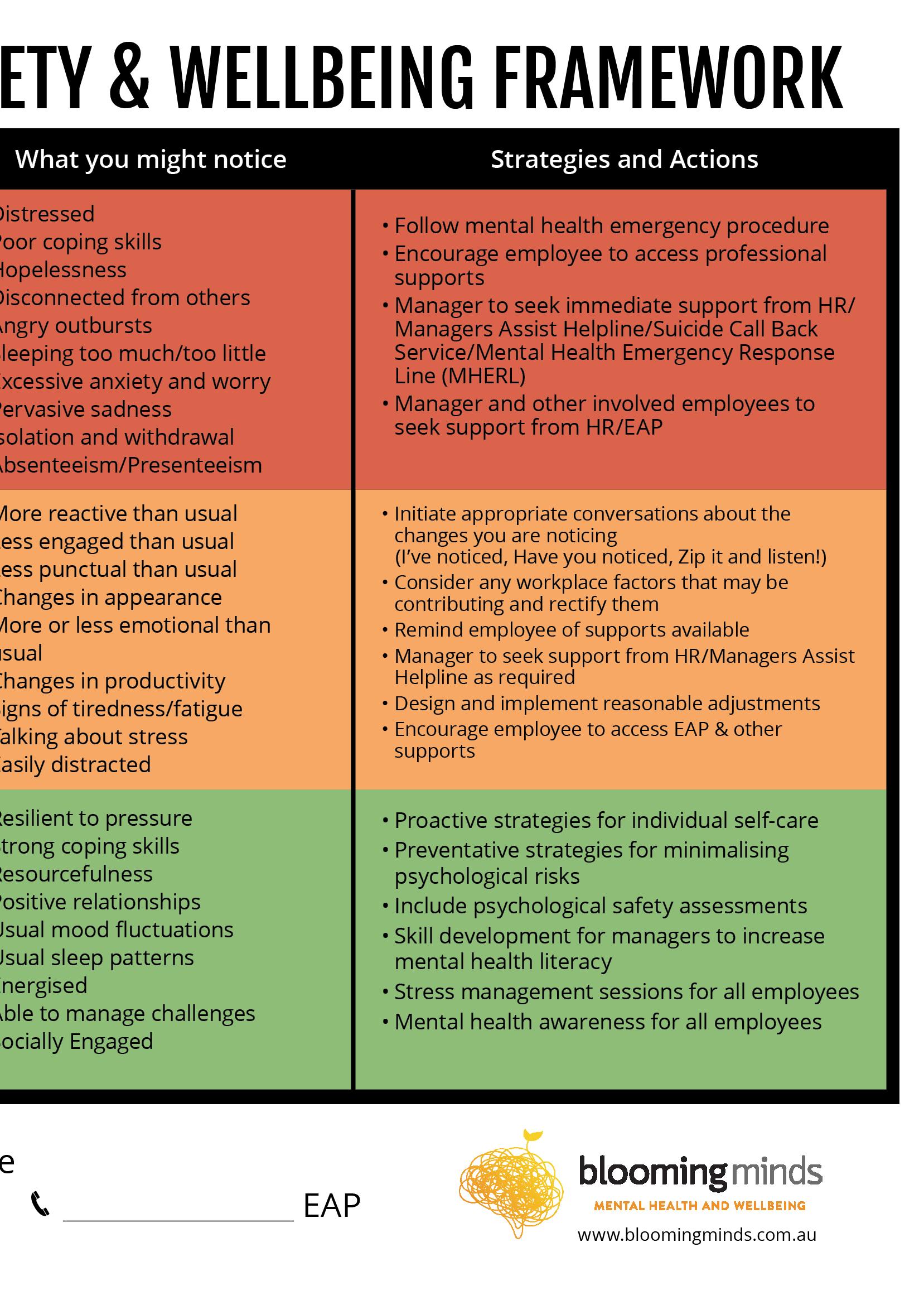

47
Testimonials

Tasha is a great presenter with a wealth of knowledge around all things mental health. She explains complex topics very well and provides concise, practical strategies to assist others.
A. Nuich, Senior Advisor Health and Wellbeing
Excellent course that provides the underpinning knowledge to make sound decisions and lead a team effectively in times of change. Highly recommended.
S. Fielding, A/Director
This online course provides essential training for all managers, supervisors and other organisational leaders. This course debunks common myths about mental illness and equips people with the skills to appropriately respond in the workplace. Do yourself a favour and put your staff through it today.
G. Downie MBA, Psychologist
Finally, a program that combines theory, evidence and models with real world pragmatism - and simple, relatable and usable approaches.
D.Patterson, General Manager, People and Safety
Fantastic course, Tash was extremely engaging. I feel empowered to have the knowledge and skills to deal with what can be a difficult topic.
S. Milburn, Manager Costing, Systems and Analytics
Tash delivers implementation material on mental health in a simple to understand way that everyone can relate to. I would recommend everyone responsible for managing teams does this training.
E. Matthews, Manager Customer and Stakeholder
Meet your obligations for managing mental health in
Blooming
workplace
the
to: Build AWARENESS Teach SKILLS Change BEHAVIOURS
that Save Lives. Talk
can help you: www.bloomingminds.com.au 48
Minds partners with your organisation
Training Programs
to us today about how we




















































 Photo: Sam Affridi
Photo: Sam Affridi


















 The above figure by L. Leahy and N. Chamberlain outlines possible emotional reactions to change.
The above figure by L. Leahy and N. Chamberlain outlines possible emotional reactions to change.








 Photo: Brian Mann (Unsplash)
Photo: Daniel Chekalov (Unsplash)
Photo: Engin Akyurt (Face)
Photo: Suad Kamardeen (Unsplash)
Photo: Brian Mann (Unsplash)
Photo: Daniel Chekalov (Unsplash)
Photo: Engin Akyurt (Face)
Photo: Suad Kamardeen (Unsplash)



 FBy Kelly Ho & Janet Stevens
FBy Kelly Ho & Janet Stevens

 Child reading graphic from photo by Aaron Burden (Unsplash)
Child reading graphic from photo by Aaron Burden (Unsplash)














